#in cinema it's called a script supervisor
Explore tagged Tumblr posts
Text

full name: jordan avi cohen nicknames: avi age: 25 (july 28, 1999) zodiac sign: leo gender/pronouns: cis man, he/him sexual orientation: bisexual hometown: aspen creek, nc occupation: digital media manager for the mayor's office / filmmaker financial status: upper middle class current residence: moved back in with his parents in maple grove time in blue harbor: born and raised, left in 2021, returned may 2024 family: benjamin cohen (father), tba cohen (mother), aurora cohen (older sister), ezra cohen (older brother)
a picture-perfect household, scarily stock photo-esque in department store picture frames, avi was born to a legacy family in aspen creek, north carolina with kind, loving parents and a set of older siblings who were basically his guardian angels growing up.
he has always been a ecclectic kid with a myriad of interests that his parents nurtured. everything, from drum lessons to skateboarding to painting... however, avi's one great love would always be cinema. movies were a quick and easy way to get a hyperactive young avi to settle down and get him out of everyone's hair when he was being a nuisance trying to get his family's attention— his father buried in paperwork, his mother too-occupied with her own business, his older siblings trying to get copy each other's homework. the nanny would just plop him in front of a tv with a movie on, any movie, and you'll have a well-behaved child in no time.
with that being said, his first official venture in filmmaking all started the moment his mother put a camcorder in his hand as a gift for his 7th birthday after he'd incessantly asked for one so he can recreate Ant Bully (2006) with an ant farm he'd asked for from his dad.
ever since then, he's been telling stories and creating worlds behind a lens, which was the perfect avenue for letting his imagination run wild. and while his family indulged and supported this passion of his, it became clearer, especially as he grew older, that this was meant to be no more than a hobby.
his father had tried steering his older siblings towards a career in politics, much like those that came before him, however, the twins proved more stubborn than anticipated, each pursuing their own path, leaving avi to absorb the often not-so gentle nudging from their father towards politics.
at 18, avi moved out for the first time to attend the university of pennsylvania where he majored in marketing & communications while also being heavily involved in the school's film club, often hanging out with the film students and getting involved in their projects.
shortly after graduating, avi then moved to LA where a friend of his helped him get a job as an assistant script supervisor for a tv show, working his way up towards script supervisor, then assistant director. he was halfway through principal photography of a pretty big movie when he was called back home by his mother to support the family in a time of crisis: his father was caught having an affair with his assistant (and his brother's best friend), throwing the family in the eye of a treacherous scandal.
avi had no choice but to drop out of the film and move back into his childhood home in maple grove both as a way to offer support for his mother as well as to further strengthen the image of a once great and infallible legacy family in aspen creek.
a month into moving in, avi was swayed by his father to work for him—or the town of aspen creek, to be more technical about it, at the risk of nepo baby allegations—as a digital media manager to "put his degree to better use" as his father had so kindly put it. working at the place that scandalized his entirely family leaves a bitter taste in his mouth but he does it for his mother, who had urged him to do just as his father says. it's for the good of the family, avi.
HEADCANONS.
avi is a mama's boy through and through. he's had her wrapped around his finger since day one, making it easy for him to get what he wants in most circumstances. well, within reason, anyway.
his absolutely favorite movie growing up was the adventures of sharkboy and lavagirl. his parents helped him and his siblings dress up as the characters for one halloween when he was six, with him going as max (begrudgingly) since the twins were just so sharkboy and lavagirl-coded.
he is a letterboxd troll and never posts any serious reviews, but he thinks that takes the fun out of the movie-watching experience.
avi has a few laurels under his belt (or on his head) for a short film he shot while in college called [TBD FILM TITLE LOL], a 15-minute dark comedy about a group of students hiding their teacher's dead body just hours before an exam is to take place.
he was urged to attend upenn by his high school gf/bf (who got a scholarship to the place) who wanted them to go to college together, only to get broken up with after a semester. the two remained on-and-off for a few years and now barely talk even though they're both back in town (potential wc? 👀)
loves making spotify playlists for specific moments past, present, and future. making playlists for his friends is also one of his love languages.
games a lot, though not as often as before. particularly enjoys fps games though will usually go through whatever catches his eye on steam and plays til dawn with his friends.
5 notes
·
View notes
Text
'Christopher Nolan is no stranger to blowing things up. From Inception’s snowy alpine fortress to Tenet’s airport collision, he’s always been one to create as many thrilling moments as possible through in-camera effects. But no one explosion could ever be as crucial to a Nolan film as Oppenheimer’s landmark Trinity Test - a faithful recreation of the world’s first-ever successful atomic bomb detonation.
But, for a director with a long-held passion for practical effects, it was actually one of the rare occasions from his previous films where he embraced CGI methods that made it clear to him that Oppenheimer’s cinematic centrepiece would have to be created without the use of computer graphics.
“At the end of Dark Knight Rises, there's a nuclear explosion, the point of which is very, very different from the explosion we knew we had to portray in the real-life Trinity test”, says Nolan. “So we used computer graphics to do the explosion in Dark Knight Rises. But, strange to say, in that sequence, it was the release of tension. It was actually put further away and made to feel safe.”
“But when I came to Oppenheimer and I thought, okay, how do we portray the Trinity test? That first atomic device being detonated. That's not going to work because computer graphics, they're extremely versatile, and the detail that can be achieved and the variety of imagery that can be achieved is obviously unparalleled. But the results tend to feel a little anodyne, a little safe. It's very difficult to have computer graphics convey threat, which is why they have to be used very carefully in horror movies, for example. It's difficult to make CG threatening.”
“So I first showed the script to Andrew Jackson, my visual effects supervisor, and said, I don't think that tool's going to work for us. So let's see if we can produce all of these effects using analog methods, from the very first imaginings that Oppenheimer has of the quantum world, of atoms, and how they would be interacting with strong force between them. Waves, particles, the duality of that.”
It's difficult to make CG threatening. “ The scene set prior to the detonation in the vast New Mexico desert is one filled with tension. Each member of the cast is on top of their game displaying a range of excitement, fear, and dread. It’s a breadth of emotion that needed to be carefully balanced by Nolan and reflected in the blast itself. So many of his previous stunts and set pieces were designed in order to thrill and entertain the audience, turning their world upside down like a semi-truck flipping over in downtown Gotham.
Oppenheimer called for a different type of effect. One more akin to a moment of tragedy from something like There Will Be Blood than the heroic action of Top Gun: Maverick. It’s meant to be a horrifying moment that leaves theatres solemnly quiet as opposed to whooping with glee.
“Well, it's useful that you use the word horrific in the same breath as entertainment, which seems contradictory”, Nolan explains. “And of course, it's a little uncomfortable talking about the word entertainment in regard to something so serious. But horror is a valid genre in cinema, the same way as drama, romance, comedy, or anything else. Movies can be anything. And when we speak of entertainment in movies, we're not necessarily talking about fun, laughter, and happy things. We're talking about engagement. We're talking about being riveted by a very tense and dramatic story. And possibly appalled, possibly horrified.”
“That's engagement and that is the stuff of entertainment”, states Nolan. “And so for me, everything about Oppenheimer's story was about engagement. Everything is about being in his head and using the IMAX format, which we've used for action in the past, we knew it would give us the vast desert, the weather coming in, the storms, the Trinity test itself, with its beauty and horror in equal measure. That contradictory impulse. And it's there in the story structure as well, the build and the Trinity test, and then what comes after. This is a film about consequences. And we want it to be unsettling.”
The Manhattan Project was one of great secrecy at the height of World War Two. It’s surprising, then, that so much archival footage of the events exists. This was a luxury that Nolan happily took advantage of, pouring over the available films to grasp an accurate sense of what Los Alamos looked like at its bustling peak.
Being true to life is one thing, however, and something Nolan values highly, but that also needs to be balanced with making sure it's still a cinematic spectacle to behold."
"It was incumbent on us to be guided by, and not contradict, the documented reality, but to be expressive of it in our own way. “ “It's a tricky balance with something as well documented as the Trinity test”, says Nolan. “It's very inside baseball as they say, but for filmmakers to look at the cameras they developed, the way they shot those tests. It's really remarkable, brilliant stuff. Shooting at frame rates far beyond what we can do now. All kinds of incredible technology, but archival footage is inherently distancing. We needed to be in the texture of the film with all of the imagery we created. So it was incumbent on us to be guided by, and not contradict, the documented reality, but to be expressive of it in our own way.”
"I think it was fortunate for us that the bulk of the documentation of the Trinity Test is in black and white. So at the very least, by bringing color to it, we're being forced to make it our own. And a lot of what we did, in both the shooting, and then, in particular, in the editing of the sequence is really based on firsthand accounts. It's more about what people said about it than what the photographs or the film of it said.”
One thing that couldn’t be legitimately reproduced was, obviously, the atomic blast itself. Multiple techniques were experimented with by Nolan’s special effects team led by Scott Fisher and Andrew Jackson to recreate the sparking flashes and fiery flurries of the explosion. Ping-pong balls were smashed together, paint was hurled across walls, and luminous magnesium solutions were developed.
By filming these events super-close up at variable frame rates they combined with Director of Photography Hoyte Van Hoytema’s sweeping IMAX cinematography to create in-camera effects that fill the screen with a power that such a monumental event demands.
“Some of what we were shooting was main unit. Some of it was being shot with Andrew Jackson, our visual effects unit”, explains Nolan. “And so we were seeing it in pieces. And I do remember one particular set of dailies that we watched that these guys had shot, that really captured a feeling of immensity.”
"We try and grow that thread to its ultimate release, this kind of vibrating energy that follows through the whole film. “ “Scott Fisher's work on the special effects, combining magnesium flares with gasoline, and black powder explosions, and things. There were some extraordinary things to look at just to eye. But watching the dailies, you were seeing it develop with my editing brain on, and then with Jen Lame, the editor in the edit suite, you just start visualizing combinations, and experimenting with combinations of imagery to give the feeling of what this must have felt like to watch this. And what that gave me in the edit suite was this thread, this connecting set of analog techniques that confuse scale, from the particle world of quantum mechanics, to the vast universe, astrophysics, et cetera, and all the points in between.”
“We try and grow that thread to its ultimate release, this kind of vibrating energy that follows through the whole film, to its ultimate release in this incredibly destructive event”, Nolan continues. “And so some of what they did was absolutely tiny and magnified, sort of miniature, as it were, or even beyond that really, microscopic. And some of it was absolutely vast and required intense concentration on set.”
“We were out there in the desert of New Mexico, just like the scientists of the Manhattan Project. We built the bunkers, we built the tower. We're out there at night preparing for these very large-scale explosive events that have to be conducted safely and with great care. So there's a tension, there's an anticipation in what we are doing as filmmakers that I think helps the actors, helps everybody understand, gain some small understanding of what must it have been like to be there that night, that early morning at the Trinity test.”
The end results are there for all to see. The moment the Trinity Test explosion lights up the screen is a stunning example of practical effects work. A worthy rendering of one of history’s most pivotal events, the scene never once forgets to take its eyes off of the people responsible for it - with Cillian Murphy’s face one that mirrors most who’ll watch it, one of awe, in the very literal definition of the word.
“There was a definite feeling of what we are seeing is both beautiful and dangerous, in equal measure”, states Nolan. “And that's what we had asked for. So we always knew that the sequence would be a collage rather than one iconic shot. If there is an iconic shot, I think it's the profile of Oppenheimer seeing it.”
“And I think part of the unsettling quality of the film is due to, you do feel engaged, you do feel you understand Oppenheimer, you're on that journey with him. You're not judging him. And so when you're then made to feel differently about things or question things you've already seen, it is a little uncomfortable. It's a little unsettling. And I'm hoping that the film leaves people with sort of an uneasy feeling.”
Oppenheimer will be released in cinemas from July 21st.'
0 notes
Video
vimeo
Agoria - CALL OF THE WILD from Loic Andrieu on Vimeo.
Directed by Loïc Andrieu
Produced by SOLDATS FILMS
Music by AGORIA (ft. STS) performing "CALL OF THE WILD"
© Soldats Films © 2019 Sapiens Recordings
Producer: Pierre Cazenave-Kaufman (Soldats Films) Director of photography: Simon Chaudoir Editor: Naza Giral (Soldats Films) Art director: Freyja Bardel Artistic Director: Loïc Andrieu Colorist: Mathieu Caplanne Los Angeles Producer Gaetan Rousseau (Paradoxal inc) Wardrobe Stylist Los Angeles: Yasmine Abraham Re-Recording Mixer: Christophe Leroy
VFX House: REEPOST
Starring Fleur Geffrier, Carl Crupud, Sean Roc Smith, Ron Guilbert, Christianno Chavez, Sam Ingraffia
Based on feature film script "LIFE LINE" written by Hedi Chellouf & Loïc Andrieu
Label: Sapiens Video commissioner: Christian De Rosnay
Development manager: Juliette Labrousse
Production Service Los Angeles: PARADOXAL INC
Sound facilities: YELLOW CAB STUDIOS
ADR & Foley Mixer: Christophe Leroy Sound designers: Alexis Jung & Olivier Ranquet Foley Artist: Florian Penot
Special thanks: Victoria Videnina
----------
Los Angeles crew
Executive Producers: Pierre Cazenave-Kaufman (Soldats Films) Associate Producer: Gaetan Rousseau (Paradoxal Inc) Production Service Los Angeles: Paradoxal Inc Line Producer: Hugo Marcel Production Manager: Thomas Duchêne 1st AD: Manuel Roman 2nd AD: Nick Brokaw Production assistants: Eric Hellberg & Yohan Lefevre & Martin de Bokay & Nicolas Thau & Timothy Watson Vocal Coach: Laura Rizzotto Location Scout: Kaelyn Phillips Art director: Freyja Bardell Set decorator: Crystal Criego Prop master: Dominic Wymark Leadman: Eligh Macias Set Dresser: Daniel R. Oregel & Kevin Lopez, Pedro Ramirez, Taylor Williams
Wardrobe Stylist: Yasmine Abraham
Wardrobe Assistant: Coleen Chan HMU: Jessica Sainclair
Casting director: Sarah-May Levy Cast: Fleur Geffrier, Carl Crupud, Sean Roc Smith, Ron Gilbert, Christianno Chavez, Sam Ingraffia, Spencer Frankeberger, Deron Cash, Rusty Rooftop, Gabriella S.Robinson, Shan Moreno, Sadyr Diouf, Natasha Churchil, Bodhi Dell, Johan Domhoff, Ryan Gatewood, Abraham Sesay Newscaster Voice Over: Douglas Rand 1st AC: Vincent Toubel 2nd AC: Dusty Saunders & Rogelio Mosqueda Steadicam Operator: Olivier Merckx Sound operator: JP Delacruz Sound design: Alexis Jung & Olivier Ranquet Mix: Christophe Leroy Gaffer: Joel Gill Best boy electric: Gerardo Ruiz Electrics: Laura Sfeir, Eddie Teram, Davis Villa, James Wray Key Grip: Dennis Pires Best Boy Grip: Ivan Garcia Grips: Robert Dulany, Ardy Fatehi, Michael Parlinic Motocrane: DRIVER’S EYE TEAM LAPD SERVICE: Paul Hinton, Darryl Martin
Catering: Mia’ Cuisine Los Angeles Studios: BEEPS DINNER, SILVER DREAM FACTORY, ESCOBAR FAMILY Los Angeles Costumes rental house: UNIVERSAL COSTUME, WESTERN COSTUME
Los Angeles Police Car rental house: CINEMA VEHICLES Los Angeles props rental house: ISS, SET STUFF OMEGA Los Angeles Camera rental house: PANAVISION HOLLYWOOD, CHAPMAN : LEONARD, JQ DA SILVA
----------
Paris crew
Production Company: Soldats Films Producer: Pierre Cazenave (Soldats Films) Line Producer Paris: Quentin Henneguelle (Soldats Films) Production Manager: Charlotte Giral (Soldats Films) 1st AC: Maud Cyrano Gaffer: Michael Monod Electrics: Jerôme Baudouin, Cedric Guerby Key Grip: Benjamin Rame Prop Master: Ludovic Jardiné HMU: Elisabeth Pilarsky On Set VFX Supervisor: Clement Germain
YELLOW CAB STUDIOS Sound designer: Alexis Jung & Olivier Ranquet Foley Artist: Florian Penot ADR & Foley Mixer: Christophe Leroy
SOLDATS CREW Post Producer: Naza Giral (Soldats Films) After Effects by: Naza Giral (Soldats Films) - Rémi Muzzupapa (Soldats Films) – Paul Laurent (Soldats Films) - Victor Sellier (Soldats Films)
REEPOST CREW
REEPOST VFX Supervisor: Adrien LEPINEAU
REEPOST VFX Post-producer: Loundja OUSSANA
Assistant post-production: Tilou MARTIN 3D Supervisor: Stephen PLONGEON
3D Artists: Xavier VERDIER Marion GUICHENUY Geoffrey PONS Olivier MASSON
Compositing: Matthieu DESTRADE Marc LATIL Benoit MESSAGER Johan ROCHE Gaetan BAILLEUL Thierry BONNEAU Mathieu PLESSIS Alexis BAILLA
Tracking: Toufik MEKBEL Walid BEN HEND (VISION AGE VFX)
Studio La Villette: Navarro ------------------
Special thanks to Agoria « You made it happen ! »
Christophe Leroy for Yellow Cabs Studio « Sound Wizard ! »
1 note
·
View note
Text
This post is so refreshing thank you ! I've never been a Minato fan, I've always seen his choice of putting a demon inside his first son as an act normally associate with those of... a villain first category. If you know Black Butler, Dororo ect... but I've never put his act next to those of the Kazekage !

Naruto and Gaara were on purpose written like a mirror of each other. Same destiny as Jiinshuriki, one turns good and the other one turns bad until he's saved by the hero. Problem as usual with Narutoverse : the Inconsistency ! And this time I'm gonna talk about the value system in Naruto. As a shonen it's very important, the hero must reflect those high values : friendship, loyalty, kindness, generosity, resilience, empathy ect...
On paper Naruto is suppose to be this hero moved by the most noble and generous motivations. But the more you read the story the more you realise that intrinsically Naruto doesn't really have any of those he's mostly very egoist : being acknowledge by everyone included those who doesn't care like Sasuke. Systematically any subversive actions done by those uplifting the Will of fire will always been justify by a higher need to protect the village at all cost. Literally tomorrow Naruto is raping someone or eating a baby alive (God forbids), they will find a way to explain that it was the only way to prevent konoha from being engulf by a volcanic explosion. You think I exaggerate? but it's the tiresome and absurd explanation they gave us to justify Uchiha's ethnic cleaning and most readers think it's unfortunate but perfectly fine.
So I was chocked when I realise that Gaara's father is often called one of the worst father of the year for two reasons : making Gaara a junchuriki, and trying to kill him a multiple time when he was getting out of control.
But when Konoha's founder is ready to do the same it's alright. To protect children from war, better to kill my own child if necessaries :
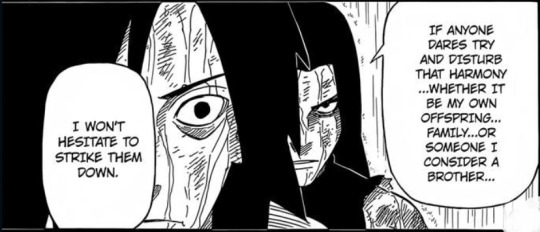
And by the way in Boruto, Naruto now an Hokage is contemplating the same idea and if not him, Sasuke will kill his son if he's getting out of control (we're back again into this Shadow Hokage/ Light Hokage nonsense where the loser is serving the winner. It's so sad that Sasuke is reduced to be Naruto's personal garbage holder. And I'm so proud Madara saw through the scam, resigned and gave the dirty job to Tobirama.

So seriously why did we all hate Gaara's father already? He did to his son exactly what Minato did to Naruto with a twist he makes him orphan of both parents while he could have avoid it. He did what Hashirama had sworn to do, what Itachi did, what Naruto should do, and what Sasuke is now ready to do. the Kazekage protects his village from Ichibi being out of control, taking into account Gaara did kill many people in suna.
For this reason most popular Konoha enthusiast are really hard for me to feel close to on top of the list Hashirama, Hiruzen, Minato. With the exception of Tsunade, Kakashi and Sasuke who are for me victims and broken by this system. This opportunism in the storyline is annoying specially when you think it targets a young public. Genocide is ok, harassing people is ok, toxic relationship is the epithome of love Sakura/Sasuke, murdering is family is also ok no real consequences. They never held accountable for nothing. No lesson needs to be taken from the hero from all that have happened in the past. But trying to reform a system who broke so many lifes? Oh Lord ! Burn to hell or repent till the end of boruto time.
While villains offers a lot of solution to improve the system. That's their role after all, being an opponent is being an opposition that force the hero to defend and revaluate his paradigm and improve it if needed.
Pain emphases the absence of empathy in Konoha, how self-centered is their politics.
Tobi/Obito pushes in purpose the shinobi system to its limit to bring into surface their hypocrisy and their own perversion : Shinobis needs war to prosper. When they said they want peace they blantanly lie. War makes their life meaningful.
Akatsuki is the natural product of this perversion. They are pyromaniac firemen and get profit off the chaos. And some members like Deidara and Hidan find joy and euphoria in murder.
Madara kindly propose to annihilate that sh**t system once and for all lol
Dark Sasuke is actually the only one who did a synthesise of all protagonist. Pro and cons. while it's not his job, he's not the hero and he offers an alternative solution.
What did Naruto propose in the end? Except the mantra believe me I'm the messiah. I mean seriously what did he brings new to the table after 700 chapters? At least Hashirama brings a village for what it's worth. How fundamentally different is Narutoverse since the first chapter to the last one?
Those reading Boruto knows that absolutely nothing change. Don't be blinded by neons, skycrappers, subway, and burger kings in Konoha, that's just cosmetic. But the darkness overshadowing the village that Madara was talking about in vain, did not move at all. And the Otsutsuki's plot is a perfect way to divert attention from this ugliness. Mmh? Shinobi system? child soldiers? Ame village promise? Oroshimaru still playing with kids? Konoha public responsibility in Uchiha downfall? Ao a veteran of the 4th turning villain (and an other one !) disgusted by the shinobi system? After chakra now using technology for killing more people?
OH LOOK WHITE ALIENS ARE DESCENDING FROM THE SKY! WE NEED EVERY ONE, WAR CRIMINAL, INCLUDED TO HELP US FIGHTING THEM, BELIEVE IT! BELIEVE IT!!!!
And the circus must go on.
#Narutoverse inconsistency#a very long and grumpy post#it's so annoying because it's literally not hard to hire an assistant whom sole job is being sure everything makes sense#in cinema it's called a script supervisor#he is the guys maintaning the continuity throughout the movie#being sure for instance that you don't have the actor's starbuck glass in the middle of a medieval film#even fans will do it for free if they are really stingy#Bc in Naruto it went under the radar but in Boruto it's just wild and OOC every pages
134 notes
·
View notes
Note
no need to respond if you don't want to for any reason, but I'm curious do you work on films or shows or both? and what type of work do you do on sets?
lol no worries! i don’t like to talk specifics about my real life bc i love having this blog as a place where i can vent without worrying that people will be able to identify me irl so i’m gonna be a bit vague, but yeah i do film! i went to school for film and i currently work in the industry but not in production. i loooooove being on set and spent my last semester of school basically pa-ing for all of my friends’ capstone projects, it was a fucking blast! i’m trying to get out of my current job and get more into production now that i’m in my new area though :) also thinking about going back to school for cinema studies but i think that’s further down the road for me tbh
when i am on set professionally i’m usually a pa, i once got paid to babysit gear for five hours outside in the summer heat and another time for operating a zoom call for a talent press circuit. i don’t wanna like, over-explain anything obvious but if you don’t know, pa stands for production assistant and they’re basically the grunts who do everything and anything their supervisor tells them to do. not glamorous but it’s great to feel useful and everyone’s gotta start somewhere! on a student set i got to gaff/grip (set up lighting/sound equipment, respectively) a bit and i operated a jib (basically a low-fi crane) AND a dolly (i pushed a truck that the cinematographer and his camera was on back and forth for like fifteen takes to get a good tracking shot) which made me feel very tough and cool even though my arms were trembling the entire time. i also script supervised on a few sets and i LOVE doing that, if i have a long-term career goal in production besides writer/director/producer (bc everyone who goes to school for film but didn’t go to Film School wants to be a writer/director/producer lmao) it’s definitely scripty <3 they’re the ones who check for continuity between takes and shots as well as making sure all lines are being hit and that shots in the same location but in different times in the script are differentiated etc., it’s a lot but it’s the perfect blend of practical organization and creativity that my brain loves. but tbh just being on set, especially a fiction scripted set, is just my favorite feeling in the world, i could be told to stand in the corner and hold sandbags for ten hours and be happy :)
#last part not really i’ve had some bad gigs lmao. but yeah film sets my fucking beloved <3#hey nonny nonny#‘i’m gonna be vague’ [proceeds to monologue about my personal experiences on set]
2 notes
·
View notes
Text
The "Let me go - it's okay," she told him the last time we saw the Black Widow, it was - to say the least - emotional. "Let me go - it's okay," she said to Hawkeye, plunging to her death on the arid planet Sleeping in Avengers: Endgame for the ultimate sacrifice to save the world. While the deaths in the Marvel Cinematic Universe go on - sorry, Iron Man - there was probably no more heart-stopping moment, since the former SHIELD spy who became Avenger gave her life to recover the Soul Stone.
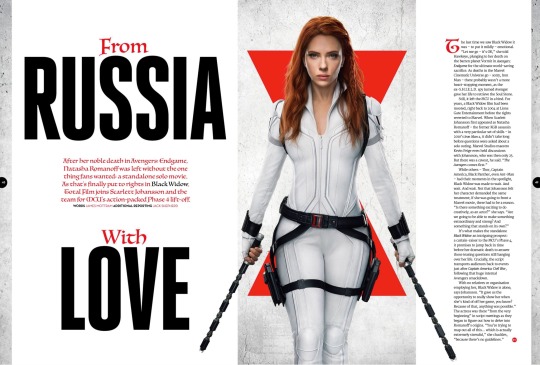
Still, it left the MCU in a bind. For years, a Black Widow film had been mooted, right back to 2004 at Lions Gate Entertainment before the rights reverted to Marvel. When Scarlett Johansson first appeared as Natasha Romanoff - the former KGB assassin with a very particular set of skills - in 2010's Iron Man 2, it didn't take long before questions were asked about a solo outing. Marvel Studios conductor Kevin Feige even held discussions with Johansson, who was then only 25. But there was a caveat, he said. "The Avengers comes first."
While others - Thor, Captain America, Black Panther and even Ant-Man - had their moments in the spotlight, the Black Widow was forced to wait. And wait. And wait. Not that Johansson thought that her character demanded the same treatment; if she was going to be in front of a Marvel movie, there had to be a reason. "Is there anything exciting to do creatively, as an actor?" she says. “Will we be able to do something extraordinary and strong? And something that stands on its own? "It's what makes the independent Black Widow an intriguing prospect: an inauguration of Phase 4 of the MCU promises to step back in time before her dramatic death to answer the provocative questions that still hover over her Crucially, the script transports audiences back to the events right after Captain America: Civil War, after that huge internal confrontation of the Avengers.
Without relatives or an organization that employs her, the Black Widow is alone, says Johansson. "It gave us the opportunity to really show her when she's kind of out of her game, you know? Because of that, anything was possible." The actress was there "from the start" at the script meetings, as they began to figure out how to delve into Romanoff's origins. "You are trying to map all of this ... which is extremely stressful," she laughs, "because there are no guidelines."
Fortunately, Johansson was not alone. In another inspired choice for the MCU canon, Feige recruited Australian director Cate Shortland, best known for discreet dramas like Somersault and Lore. While she was surprised, Shortland was encouraged by the creative freedom that Marvel was offering. “They allowed me to be myself and encouraged me to make a movie that I was passionate about,” she says. "We were allowed to have a lot of nuances and make a character-oriented film."

After several Skype sessions with Johansson, who also receives producer credit, Shortland worked with a Russian researcher to embody Romanoff's dark story: "the red in my ledger", as she told Loki in 2012 in Os Avengers. As she sings in the trailer, "We have to go back to where it all started" - the promising teaser clips of Romanoff as a young man (played by Ever Anderson, daughter of Paul WS Anderson and Milla Jovovich) in a childhood that seems far from idyllic. That's what makes Black Widow a family reunion of the kind that only Marvel would have the courage to conjure. Joining Romanoff is Yelena Belova, a sister-sister and fellow murderer who trained alongside her in the so-called Red Room, the punitive Soviet facility that produced 'Black Widow' spies.
"Their stories intersect," promises Shortland. "They clash." Played by Lady Macbeth's British star Florence Pugh, Belova is more than a physical match for Romanoff. Still, emotionally is where it really matters. "What Yelena does is kind of point to Natasha's pain," says Pugh. “She is part of Natasha's story. And I think that's why we have an opportunity to look at Natasha's story, because Yelena has been knocking on the door and says, 'Hey, let's deal with this pain. ”As Johansson comments, Belova is not just a carbon copy of his own character.
"She is completely alone. She is strong and different. She is so different (from) Natasha." Beside them are Melina Vostokoff (Rachel Weisz) and Alexei Shostakov (David Harbor), two father figures whose own stories intertwine with Natasha and Yelena. "This is the coolest thing with this whole group of people. They all had parts of their past that they regretted," says Pugh. “They’re older. They’ve had more life experience. They know more about the system, about this world they’re all living in.” Harbor, the Emmy Stranger Things nominated star, managed to put an indelible mark on the muscular Shostakov, better known as the Red Guardian super soldier, the Russian equivalent of Captain America. "There is a gangster quality to him," the actor smiles. "And he's covered in tattoos. He's got a beard and those gold teeth. He's crazy." But after years of making bad decisions, he's also full of remorse.
"He's in a bad situation," adds Harbor. "And he needs redemption." Weisz's character, Melina, is another who experienced the rigors of the Red Room, a place that put her in contact with Natasha and Yelena. Marking his first dive at the MCU, Weisz acknowledges that the film addresses the idea of discovering his favorite family. "It's definitely about finding out where you belong and where you came from, and what your background story was, and who you really are, and what matters to you - your ideology, I think." Along the way, Feige made reference to The Kids Are All Right - the 2010 Lisa Cholodenko film about a same-sex couple raising two teenagers. "Which is so weird," laughs Johansson. "You would never expect that from a Marvel movie." no it was the only strange nod to the film. Harbor speaks of Shostakov in terms of Philip Seymour Hoffman's drama teacher in the dramatic black comedy The Savages.
Or even expressing "the pathos of a small town, independent, family-run, weird movie... like Little Miss Sunshine". More understandable cinema references include "things like Logan and Aliens and The Fugitive," says Shortland. "We saw movies like that." Certainly, it's easy to see comparisons between Sigourney Weaver's determined Ripley, from James Cameron's masterpiece Aliens, and Johansson's Romanoff, an Avenger who has no superpowers. "We saw it as a force," says Shortland, "because she always has to dig really deep to get out of shit situations." According to the director, everyone in the production invested in deepening Romanoff - even Scottish composer Lorne Balfe (Pennyworth, His Dark Materials), who replaced Alexandre Desplat's original choice. Balfe looked at the character's origins, says Shortland. “He said, 'I want to put it on the ground, because it has been dug up in the movies in the past. I want to give her that flesh and blood. 'And he created this soundtrack that is really Russian."
However, perhaps the real blow here is to recruit Shortland, the first female director to face the Black Widow (and only the second, following Captain Marvel co-director Anna Boden, to enter the MCU). "This film would not be what it is without Cate Shortland," says Pugh. "I think having her eye, and having her mind with this script, has taken her to a whole different realm." Johansson agrees. "" You can feel it was made from a female perspective ... cooked there. "Although Ray Winstone's casting as Supervisor of the Red Room Dreykov (whose daughter contributed to the abundance of red in Romanoff's book, according to Loki) add more to the psychological battleground that the Black Widow will explore, it also deals with victimization, a very pertinent topic in the current climate. The Red Room itself is where trainees are brutally sterilized. "You will see that these women are hard working and strong, and they are murderers - and yet they still need to discuss how they were abused," says Pugh. "It is an incredibly powerful piece."
Judging by the 2020 Oscars, where Pugh and Johansson had their own private relationship session on the red carpet, the two actors got along very well. "She has a really beautiful career ahead of her ... she's a very special person," says Johansson, excited when Pugh's name is mentioned. More specifically, Pugh may well have more Marvel to chew on, if it is rumored that her character will take on the 'Black Widow' mantle for new adventures. By learning Parkour, kickboxing and knife fighting for role, Pugh can safely cut things physically, though she's reluctant to claim that the Black Widow is just a setup for future outings. "Even though it is obviously where everyone wants to go and want to think - think about what comes next - this film never really seemed to be what he was trying to underline." According to Johansson, however, test the audience who saw the film thinks otherwise. "Her character and her performance are so dear." Now, after more than a year of pandemic-related delays to July 2021), it will not be just a few lucky spectators who will be able to see. Black Widow will even be the first Marvel movie to debut simultaneously on the Disney+ streaming site (with a 'main hit' fee), an understandable move considering the uncertainty that still exists around the world. And in fact, after the success of the Marvel TV shows WandaVision and The Falcon And The Winter Soldier, it doesn't seem like such a strange home. Johansson believes that fans will respond to Black Widow, with this flashback of an earlier part of her life, bringing more poignancy to the Endgame's outcome. "Our goal was for them to be satisfied with this story; that maybe they could have some solution, I think, with the death of this character, in a way. It seemed like people wanted this." Shortland agrees. "We felt that we should honor his death," she says. And the Black Widow will surely honor him.
#blackwidow interview#totalfilm black widow#scarlett johansson interview#cate shortland blackwidow#scarlett johansson#florence pugh#david harbour#rachel weisz
20 notes
·
View notes
Text
@shstarters

is that [KIM NAMJOON]? no, that’s just [JACKSON SUN]. [HE] is [TWENTY-SEVEN] years old and is a [SCRIPT SUPERVISOR]. rumor has it they’ve been in town for [TWELVE YEARS / ONE MONTH]. on a good day, they’re [INTELLIGENT & RELIABLE]. but watch out! they can also be [DETACHED & STUBBORN]. [HOLLYWOOD BY MARINA] plays in my head whenever i think of them. can’t wait to see them around springhill! [amy, 20, est, she/her]
hello, my friends ! it is i, amy. excited to bring in namjoon. excited to have marina’s name on the roster page now. excited in general ! also ! almost forgot ! if ur following this blog and ur “?????” it’s bc it was once dante’s and i j,, repurposed it !
quick facts:
full name: sun hei (korean) / jackson giorgio sun (western)
date of birth: september 19, 1992
*does not perfectly reflect the below big three zodiac chart because that’s too much math
zodiac big three: virgo sun, cancer moon, capricorn rising
gender & pronouns: cis man & he/him
sexual orientation: demisexual (capable of falling for any gender tho)
education: bachelor’s in cinema & media studies from usc
enneagram: 4w5 (?)
mbti: intp
moral alignment: true neutral (?)
background:
triggers: none we luv that !
let it be established right here and right now. that jackson’s dad is probably more interesting than he is.
his parents moved to boston and landed... in an italian neighborhood... which was just absolutely awful. not because of the italians......... but bc jackson’s dad decided he wanted to be italian.
so when jackson’s mother got pregnant, the deal was this: he would have a traditional korean name, but he would also have a western name and something very italian NEEDED to be in there SOMEWHERE. so she got to choose his traditional name all by herself. and he got to choose jackson’s middle name, giorgio, all by himself.
they also agreed that he would be raised speaking korean around his mom, english in schools and such, and..... VERY BROKEN ITALIAN around his dad bc... duolingo didn’t exist yet but... the ppl in his neighborhood who actually managed to put up w him DID.
anyway, jackson’s life after... being born was pretty uneventful! a lot of cultural mixes... only one of them was rly lame bc he was a man who desperately wanted to be italian but just. was not. the man probably cried because he couldn’t grow a mustache. anyway!
his sister was born when he was eight and his mom managed to convince his italian-obsessed dad to move to a smaller town nearby (striking a deal that he could choose her first westernized name and it cld be italian!!): springhill!
jackson’s life remained pretty chill. they learned he had a high iq and almost perfectly eidetic memory. he managed to skip two grades, thus graduating high-school at age 16. the following two years were spent taking some community college classes – he decided he didn’t want to go to any Official University™ until he would be the same age as everyone else, but he did want to keep learning!!!
although he was originally attracted to the sciences, various other fields started calling to him as he took random classes (let it be known he learned italian for his dad). what he landed on.. was very unexpected.
he decided he would apply for usc’s film program.
you see, he realized he was really good at spotting continuity failures
he actually managed to get accepted, so he moved to california when he was 18. it isn’t cheap :\
at 21, he made a connection with an alum and they helped him get started as he began working under various people in the film industry as a pa
his connection managed 2 eventually get him to a script supervisor who would let him shadow her.
timeline timeline timeline
at 24, he got his first solo script supervising job. it was a very small indie film, but it was 1) something, and 2) impressive for his age and experience (or lack thereof). he pretty much continued to work for indie films, although they did get slightly bigger as he got more under his belt.
eidetic memory... so helpful.
made it so frustrating when he saw that they used a shot that had a continuity error in it anyway :\
at 26, he landed his first... not big, but bigger production to supervise the script of. it was an excellent step!! and again!! very impressive for his age!! he had his connection and that woman who let him shadow her to thank!!
he’s rly been living the dream!!!!!!!! that spotting the continuity error dream!!!!!!
he returned to springhill one month ago after learning his mother had fallen ill. she recovered, but he figured he’d stick around just a little bit longer because... whew! so nice for things to slow down! but also he’s still paying rent on an apartment he’s not living in so he should go back at some point because that’s also where his job is! you don’t really shoot films in springhill!
voila.
tl;dr
i managed to write a fairly long intro about a character who lived a p chill life. dad liked to think he was italian. was korean. (jackson) skipped two grades. went to usc. eidetic memory made him perfect for being a script supervisor. came back. lowkey wants to stay indefinitely but also doesn’t.
personality:
loves work and working
loves knowledge and learning
READ EVERYTHING HE SAYS IN CAPTAIN HOLT’S VOICE.
WE’RE GONNA FILL THIS OUT LATER FOR RN,,, THE QUICK FACTS AND THE APP SHLD BE ENOUGH 2 SUFFICE!!
connection ideas:
childhood friends
old friends in general
an old partner
very very good friend who may turn crush
bad influence (them on him)
good influence (either mutual or him on them)
UP FOR BRAINSTORMING OR LOOKING AT YOURS!!!!
ok !! like this or hmu if u wld like 2 plot !!
#springhillintro#I HOPE THIS ISNT THE THEME THAT DOESNT SHOW TABBED BULLETS#I THINK IT SHOWS THEM BUT.
6 notes
·
View notes
Text
how does anime work?
Have you ever wondered how anime is built? For most people, anime production can be all smoke cigarettes and reflectors. The distance between your conceptual art and the concluded masterpiece is the length of time of a typical 12-week season. Typically the truth is, until you communicate Japanese, the production process that governs Japanese movement is shrouded in mystery. Trying to find out there more will make you a new number of terms many of these as essential animator, advanced animator, movement home, episode director, skill representative and even character custom. How cartoons is made in Japan is very various from how you could consider; Frequently , it's a good very much more smooth (read: chaotic) process you might expect. The artwork of movement Animation manufacturing is a new messy adventure. Disorderly preparation, strict deadlines, deadlines and rampant inefficiencies are function hazards that any individual functioning in a small and fresh created environment will be conscious of. The soul is usually the labor associated with love and the ability of many folks, like well as the fortitude of a select few. Following all, it is 1 that needs many, numerous steps. The success of even a single tv show is not any modest feat, and a incorrect stage can have really serious effects for the whole manufacturing. Dig further and you will find production applications and color-coded checklists which might be nightmares. So many spreadsheets, so many validations. anime creation Another normal day at the particular office for the production supervisor. Image by Sentai Filmworks. I will do my personal far better to provide a great review of the procedure, describing this main steps plus the main stars. In this view, We hope to present how challenging it is definitely to create a good cartoons, not to discuss some sort of great 1, as your love for the particular natural environment revives. Above all, we pardon in progress for any errors or even inaccuracies; I am by way of no means an experienced around anime production. This manufacturing process (ie generation difficulties) preproduction This is the planning and financing period. This anime production firm (for example, Aniplex, Bandai Image, Kadokawa Shoten, Horse Canyon, Sony, Toho, Viz Media) is responsible with regard to personnel, transmission and distribution expenses. In essence, they will pay studios to accomplish it, the tv stations to be able to broadcast the idea and to be able to the licensee for you to distribute it nationally and worldwide. Above all, it records profits from income. Occasionally, several production companies will be associated with a good single cartoons. This companies (for illustration, A-1 Pictures, Bones, J. Chemical. Staff, Kyoto Computer animation, Madhouse, Development I. H, Business Ghibli, Trigger) will be the ones that do the job, pay and create often the anime itself. If typically the anime can be an original strategy, the facility will oftentimes help with the cost. Crew assembly The director is definitely the creative director and it is generally responsible for this program. When it will come to staffing, each one facilities works differently. Quite a few have got full-time animators, colorists, authors and production places of work, while others will have some sort of a lot of the time team of primary folks from each division along with a large network involving outsourced helpers. Then there are the reports that outsource the entire work to freelancers. storyboard The representative is in addition commonly responsible for storyboards. In full length TV cartoons, unlike seasons anime, screenplays are typically frame by different screenwriters. Inside a great ideal earth, the scenarios would become completely finished before an episode goes into production. This would give the rest of the staff the option to formulate a coherent and entirely realized history; However, this happens very rarely, and typically the symptoms are often in manufacturing, because the storyboards will be still being worked about. That is a nightmare, definitely. position products watch anime online The following are really the projects. Under the supervision of the director, the episode movie director and at times the particular manufacturer, the layout director will complete this details of the slashes (scenes, normally determined simply by the use of a single background). This specific involves coordinating the key image or living "cells" (displayed in warm colors) on backgrounds (displayed in cool colors), along with descriptions of how the photographic camera should move. In different words, the style director casings each line and seems at the overall structure. anime The example regarding one of a kind cut design. The black color box towards the edge from the paper shows the frame. A layout home ascertains the structure of each lower, only like a movie cinema. Think about by using Nihonden. cartoon Another example of this is definitely in the Howling ADVENTURE. The backgrounds are sunset blue and the skin cells are usually dark orange. That is unusual because typically the clouds are super-hero, not necessarily humans. Image by using MangaUK. animation Once the skins are finished, the development assistant gives the major computer animators. They are the particular ones who present living to images. The finished discounts are taken to this animation director for any event, who checks reliability and quality. If the savings receive the stamp connected with approval, they go for you to the intermediary entertainer. This kind of work is generally outsourced to less experienced computer animators at cheaper prices. Central frames are sent to help often the intermediate supervisor to help ensure they are really consistent using the quality and casings of the key toon. When a cut is turned down at any stage, the idea is returned for review. cartoons creation A key tegnefilmstegner is responsible for the key animation or, in some other words, the primary frames connected with a new slash. Image through Pinterest. digitized Finally, as soon as the animation is performed, the color team, supervised by way of the color designer, digitizes, clears and colors often the cuts. At this stage, the cuts are identified as cells (or digicells). The colorist spots the color tissue inside of the background image (as specified in the designs) and gives any 3DCG under the supervision connected with the 3DCG supervisor. The last stage of production is filming, in which arrangement, effects, and editing may be finished. animated The skill representative, colorist, and representative come together to figure out the particular final shade pattern or perhaps gradient for each character or even each having a cut. Below you can see three palaces of different shades as opposed to the background, called art. Impression from Sentai Filmworks. Write-up generation Along with the end in look, the production assistant sends the ultimate skin cells to the post-production documenting director. The recording movie director runs typically the "duplication" process by which post-production teams add voice working, sound effects, and tunes. End the life pattern of the cut in anime manufacturing. Finally, at typically the end, the manager divides, merges, edits, and evolves all the finished slices. Meanwhile, the tv show overseer and director are tested at each stage to make sure often the completed product meets his or her perspective. The grassroots managing team then reviews the entire event and gives their last opinion or maybe approval. Significant players (i. e. the ideal team) the manufacturer Makers commonly work for the anime manufacturer. They will be the people responsible to get discovering stories with potential, whether it is an original strategy from the mind regarding a creator or an adaptation of an pre-existing do the job (such as the tromba or a lighting novel). That they find together with request projects to the organization. Manufacturers have some sort of whole lot of weight in typically the production approach and for that reason generally have to agree to all important choices. Production business office The development business may be the studio's command center and is comprised of a good Generation Office manager (PM) in addition to numerous Generation Assistants (PA). The Prime Minister is usually responsible for managing often the series' programming, strategies and financing / spending budget. Their own objective is to provide final reductions in time in addition to budget. APs function within the PM together with are generally responsible for one particular or two episodes. Basically, the availability office does the task. This is just what an anime manufacturing show looks like. This can be an example. They happen to be generally far more messy in comparison with that. And much more horrible, proper? Image by means of Reddit. representative The imaginative chief creates, the educator, the evaluate, the tribunal and this executioner. Basically, the particular director is the director of the entire project and oversees the final stages regarding each within the cartoons production course of action. The home also has the final word throughout all creative decisions. They can be directly responsible for often the cases and the closing approval of every episode. The director from the episode. This specific is self informative. At importance, they are the film fans of a unique episode. This episode home works carefully with typically the overseer on all creative and logistical options with regard to the assigned episode.

https://www1.gogo-anime.ac/ Find the correct Black Anime character types The script supervisor Often the writer himself (say what? ). Your job, regarding course, is usually to make typically the characters speak. The particular representative may present often the circumstances, but the script supervisor is responsible for publishing the dialogue and narratives that guide the episode. Fundamentally, the screenplay supervisor provides the characters, settings, and even plot to our life.
1 note
·
View note
Text
LUCY GETS LUCKY
March 1, 1975
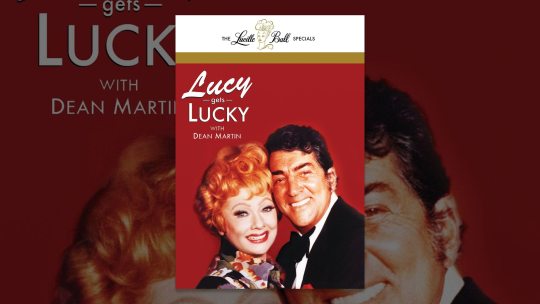

Directed by Jack Donohue ~ Written by Robert O'Brien
Synopsis
Lucy Collins comes to Las Vegas to see Dean Martin perform at the newly-opened MGM Grand Hotel. When Lucy's reservation falls through, she hears that Martin is doing a special show for employees and promptly gets herself hired. Naturally, Lucy causes chaos in each department she is transferred to: valet parking, cocktail waitress, Keno girl. But Lucy gets lucky when Dean Martin takes a liking to her and arranges a front row seat at his show.
Cast
Lucille Ball (Lucy Collins) was born on August 6, 1911 in Jamestown, New York. She began her screen career in 1933 and was known in Hollywood as ‘Queen of the B’s’ due to her many appearances in ‘B’ movies. With Richard Denning, she starred in a radio program titled “My Favorite Husband” which eventually led to the creation of “I Love Lucy,” a television situation comedy in which she co-starred with her real-life husband, Latin bandleader Desi Arnaz. The program was phenomenally successful, allowing the couple to purchase what was once RKO Studios, re-naming it Desilu. When the show ended in 1960 (in an hour-long format known as “The Lucy-Desi Comedy Hour”) so did Lucy and Desi’s marriage. In 1962, hoping to keep Desilu financially solvent, Lucy returned to the sitcom format with “The Lucy Show,” which lasted six seasons. She followed that with a similar sitcom “Here’s Lucy” co-starring with her real-life children, Lucie and Desi Jr., as well as Gale Gordon, who had joined the cast of “The Lucy Show” during season two. Before her death in 1989, Lucy made one more attempt at a sitcom with “Life With Lucy,” also with Gordon.
Lucy Collins lives in Los Angeles and took the bus to Las Vegas.
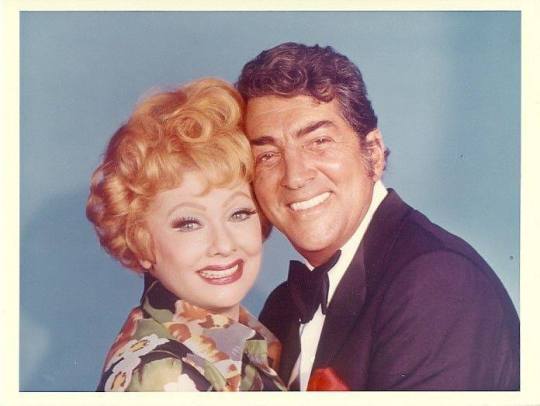
Dean Martin (Himself) also played himself (and his stunt man doppelganger Eddie Feldman) in “Lucy Dates Dean Martin” (TLS S4;E21) in 1966. He was born Dino Paul Crocetti in Steubenville, Ohio, in 1917. He made his screen debut in a short playing a singer in Art Mooney’s band, but his first big screen role was 1949’s My Friend Irma with Jerry Lewis. This began a partnership that would be one of the most successful screen pairings in cinema history. Later, he also worked frequently members of “the Rat Pack”: Frank Sinatra, Joey Bishop, Peter Lawford, and Sammy Davis Jr. His persona was that of a playboy, usually seen with a glass of booze and a cigarette. Martin and Lucille Ball appeared on many TV variety and award shows together. He died on Christmas Day in 1995 at age 78.
Jackie Coogan (Gus L. Mitchell, below center) was a child actor. In “Ricky’s Screen Test” (ILL S4;E6) Lucy Ricardo hopes Little Ricky will be “the next Jackie Coogan.” Coogan was once married to Flower Parry, who was a frequent extra on “I Love Lucy.” He is, of course, best remembered as Uncle Fester on TV’s “The Addams Family” (1964-66). He made two appearances on “The Lucy Show” and on one episode of “Here's Lucy.” He died in 1984 at age 69.
Gus Mitchell is head of personnel at the MGM Grand.
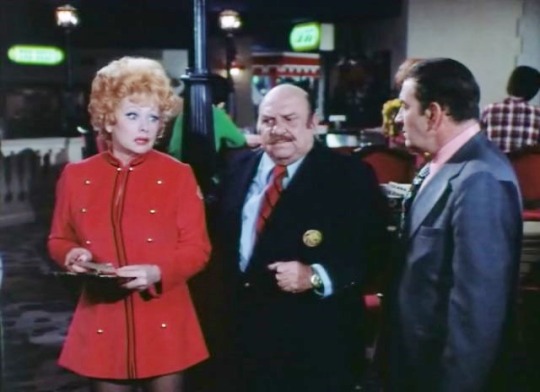
Bruce Gordon (Max Siegel / Vogel, above right) is best known for playing Frank Nitti on the Desilu series “The Untouchables” (1959-63). He played a version of the character when “The Lucy Show” parodied “The Untouchables” in 1966. He was also seen in “Lucy and the Ex-Con” (HL S1;E15) in 1969.
Although the final credits list him as Max Vogel, in the special Gordon clearly says his name is Max Siegel. He is a toy company executive with a business that has been suffering due to shipping problems with their baby dolls.
Paul Picerni (Packy West) was a also cast member of Desilu’s “The Untouchables” from 1959 to 1963. He was seen in four episodes of “Here’s Lucy.”
Lee Delano (Chuck Murdock) previously appeared on the Desilu shows “Star Trek” and “Mission: Impossible.”
Packy and Chuck are Max's gambling buddies.
Ken Lane (Himself) was Dean Martin's musical arranger, pianist, and, alongside Nelson Riddle, also served as composer for this special, although he was uncredited for that work.
Hal England (Dean Martin's Arranger) was an experienced Broadway actor who began screen acting in 1960. He previously appeared in “Lucy and the Astronauts” (HL S4;E5) and “My Fair Buzzi” (HL S5;E13). England died in 2003.
Joey Forman (Eddie) had a nightclub act with Mickey Rooney during the 1950s that led to his appearance on many TV variety shows. He will also appear in “Lucy Calls the President” in 1979.
Eddie is the head of valet parking at the MGM Grand.
Gino Conforti (Antonio) began his TV acting career in 1968 and has been continually working since, although mostly as one-off characters. He had a recurring role as Felipe on “Three’s Company” from 1980 to 1982, a series Lucille Ball admired. He played the burglar in “Lucy Plays Cops and Robbers” (HL S6;E14) in 1974. He will also be seen in and “Three for Two” later in 1975.
Antonio is the Maitre D' at the Celebrity Room. His name is never mentioned in the dialogue.
Vanda Barra (Gladys) made over two dozen appearances on “Here’s Lucy” as well as appearing in Ball’s “Three for Two” (with Jackie Gleason). She was seen in half a dozen episodes of “The Lucy Show.” Barra was Lucille Ball’s cousin-in-law by marriage to Sid Gould.
Gladys is the desk clerk (possibly owner) of the Cactus Flower Motel.
Sid Gould (Taxi Driver) made more than 45 appearances on “The Lucy Show” and nearly as many on “Here’s Lucy.” Gould (born Sydney Greenfader) was Lucille Ball’s cousin by marriage to Gary Morton. He was previously in the Lucille Ball Special “Happy Anniversary and Goodbye.”
Gary Morton (Al) was a comedian who worked the famed ‘Borscht Belt’ in the Catskills Mountains. He met Lucille Ball shortly after her divorce from Desi Arnaz and they married in November 1961. At her request, Morton gave up his nightclub career and became a producer of “The Lucy Show.” Morton also served as a warm-up comic for the show’s studio audience. He is also Producer of this special. Morton passed away in 1999.
Al is a pit boss at the MGM Grand. His name is not spoken in the dialogue.
Bonnie Boland (Sally) played Mabel on “Chico and the Man.” The last of her six episodes aired two weeks after this special was first broadcast.
Sally is a waitress at the MGM Grand Coffee Shop.
Jack Donohue (Ralph) was the director of this special, as well as many episodes of “The Lucy Show” and “Here's Lucy.” He would sometimes make cameo appearances in the episodes he directed.
Joan Swift (Dawn) made six appearances on the “The Lucy Show” as well as two episodes of “Here’s Lucy.” This special is her final screen credit.
Dawn is Ralph's wife. Lucy parks their car when they arrive at the MGM Grand.
Judith Wright (Peggy, Keno Girl)
Jane Aull (Keno Girl) was a background performer making her fifth and final screen appearance.
While making a telephone call, the character is mistaken from the back for Lucy.
Jay Jones (Maintenance Man) makes his screen debut with this special.
Roy Rowan (Voice Over Announcer, uncredited) was Lucille Ball’s announcer for all of her sitcoms. He also made occasional on-camera appearances.
During his introductions, Rowan doesn’t use the show's title, but calls it “The Lucille Ball Special.” This was also the case with “Happy Anniversary and Goodbye,” which had nearly identical voice-over announcements introducing the show.

This was Lucille Ball's second primetime special after the end of “Here's Lucy” in 1974. The first was “Happy Anniversary and Goodbye” four months earlier. After playing a character named Norma in that special, Ball is back to playing a character named Lucy. This time her last name is Collins.
In 1953's “Lucy is Matchmaker” (ILL S3;E27), Lucy tried to fix up Eddie Grant with a girl named Sylvia Collins, although the character remained off-screen.
On “The Lucy Show” Viv’s on-again-off-again boyfriend was named Eddie Collins.
Collins is the surname assigned to Robert Cummings on a 1972 episode of “Here’s Lucy”.
In the film Follow The Fleet (1936), Lucille Ball’s character is named Kitty Collins.
On a 1966 “The Lucy Show” Mr. Mooney and Lucy Carmichael meet the hip hypnotist Pat Collins (her real name)!
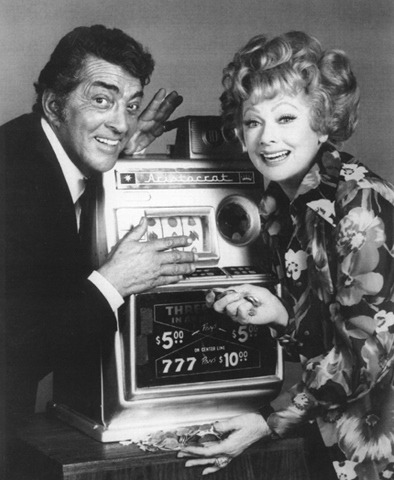
This special is available on DVD from MPI video or can be streamed online. It was originally aired on CBS in the USA and ITV in the UK. Like “Happy Anniversary and Goodbye”, this show is sponsored by Timex, which gets opening title credit.
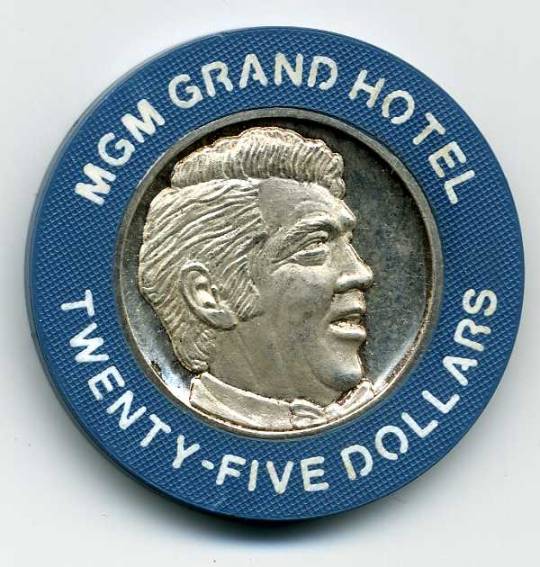
Writer Robert O'Brien had written 54 episodes of “The Lucy Show” and 24 of “Here's Lucy,” many of which were directed by Jack Donohue.
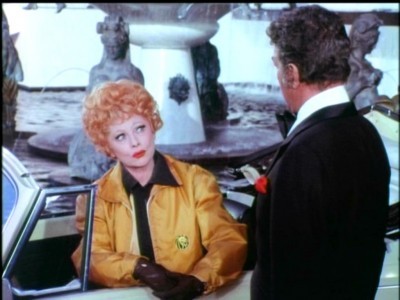
The biggest departure for this special is there is no studio audience or laugh track.
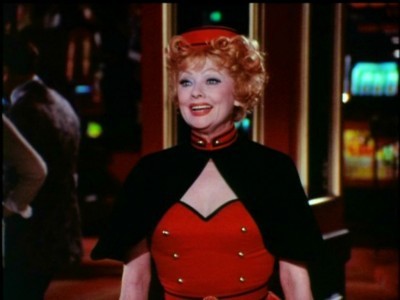
Lucille Ball reunites with many of her “Here's Lucy” production staff, including hairstylist Irma Kusely, prop master Kenneth Westcott, costumer Renita Reachi, production manager William Maginetti, and script supervisor Dorothy Aldworth.
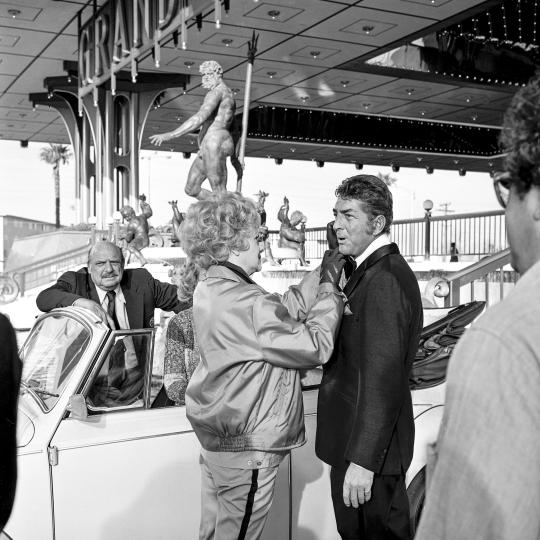
Location shooting was done at the (then) newly opened MGM Grand Hotel in Las Vegas. Scenes set inside the Cactus Flower Motel were shot at Paramount Studios in Hollywood. This is the second time Lucille Ball has shot on location in Las Vegas, the first being at Caesars for “Happy Anniversary and Goodbye.” Although episodes of her television shows were set in the city, actor doubles and second unit footage were used while Ball remained in Hollywood.
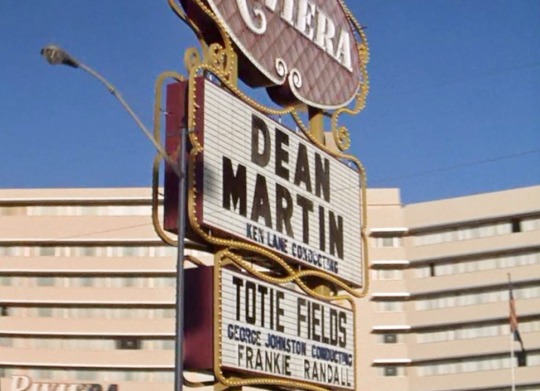
Dean Martin's name was seen on the marquee of the Riviera Hotel when Lucy Carter went to Las Vegas in 1970's “Lucy and Wayne Newton” (HL S2;E22, above), three years before the MGM Grand was built. Lucille Ball first used location footage of Las Vegas in “Lucy Hunts Uranium” (LDCH 1958). Lucy Carmichael also visited the town in 1965's “Lucy Goes to Vegas” (TLS S3;E17), however no establishing or location footage was shot, and the episode was filmed entirely on the Desilu soundstage in Hollywood.
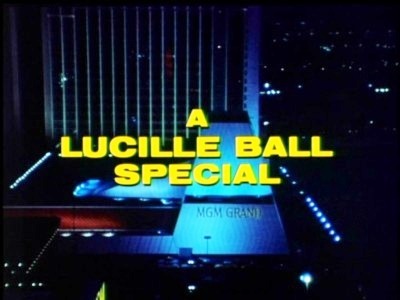
The show opens with a montage of the the Las Vegas strip that includes the marquees of the Caesars Palace, the Flamingo, the Frontier, the Stardust, the Sands, and the Dunes, before ending on the exterior of the MGM Grand. This montage is an aerial view at night, instead of the daytime street view in “Lucy and Wayne Newton” (HL S2;E22).
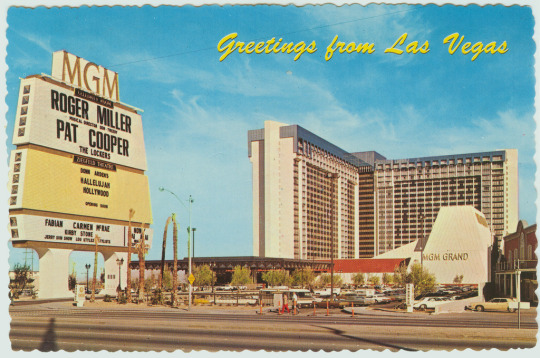
The MGM Grand opened as one of Las Vegas's first mega resorts on December 5, 1973. Dean Martin was the entertainer on opening night. It was the largest hotel in the world at its opening and would remain so for several years. “The Dean Martin Celebrity Roasts” were filmed at the hotel. The property was sold in 1986 and the name was changed to Bally's. The MGM Grand name was transferred to the former Marina Hotel, now known as MGM Grand Las Vegas.
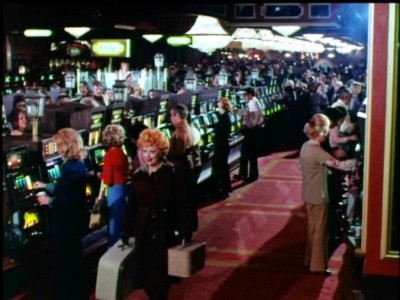
When Lucy Collins arrives at the MGM Grand with suitcases in hand, she walks through the casino and down their 'Hall of Fame' lined with illuminated posters of movie stars. The soundtrack plays a wistful version of “Hooray for Hollywood.”
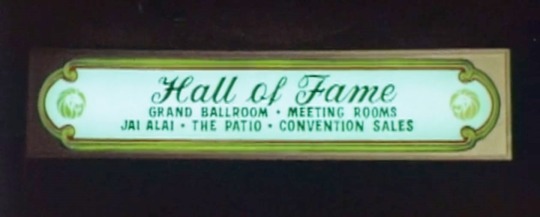
Lucy pauses at posters of Spencer Tracy and Katherine Hepburn;
She blows kisses to Cary Grant, whose poster is alongside Grace Kelly.
She gazes lovingly at photos of Frank Sinatra, Fred Astaire and Ginger Rogers. Rogers played herself on a 1971 episode of “Here's Lucy.”
Lucy does a 'ha-cha-cha-cha' in front of a poster of Jimmy Durante, who Lucy Ricardo disguised herself as in “Lucy Meets Harpo Marx” (ILL S4;E28). Durante later did a brief cameo on a 1966 “Lucy Show.”
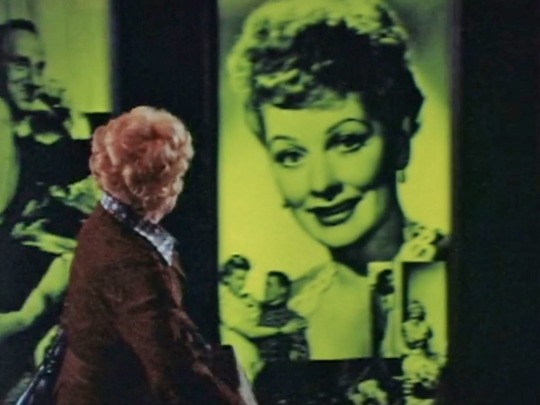
In a meta moment, Lucy Collins then stops and primps her hair in front of a poster of Lucille Ball! Lucy Carter also stood before a poster of Lucille Ball in “Lucy and the Andrews Sisters” (HL S2;E6) and later shared scenes with movie star Ball in “Lucy Carter Meets Lucille Ball” (HL S6;E22). Although her recent film Mame had been released by Warner Brothers, Lucille Ball had done several films with MGM, like The Long, Long Trailer (1954) and Forever Darling (1956).
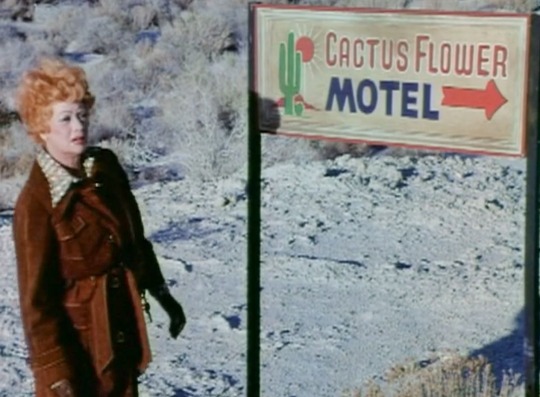
Walking out the employees back entrance and trekking through the desert, it becomes clear that Lucy was only using the MGM Grand lobby as a shortcut to get to her actual lodgings, the Cactus Flower Motel, managed by her friend Gladys (Vanda Barra).
Lucy: (about her dress choices for Dean Martin's opening night) “The other one is older, but its got a Gucci label.” Gladys: “You have an outfit from Gucci?” Lucy: “No. Just the label.”
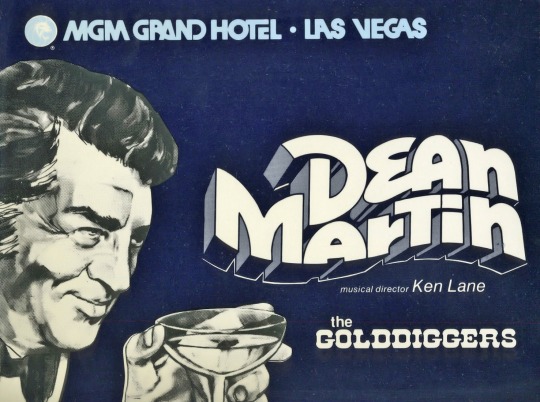
In the MGM Grand coffee shop having a cup of tea in a back booth, Dean Martin sings a few bars of “Volare,” a song written by Franco Migliacci and Domenico Modugno. Martin was one of the first to cover the song in 1958. His orchestra will reprise the song at the end of the special while Lucy and Martin dance.
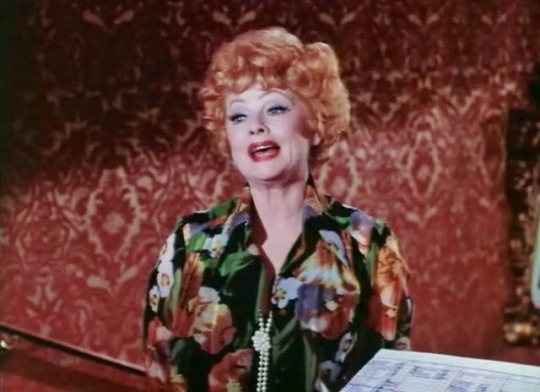
When Lucy phoned for a reservation for Dean Martin's opening night, she lied and said there'd be eight guests. Talking to Antonio the maître d' she must now make excuses for the absence of the seven others.
Mr. and Mrs. Winters are expecting a baby;
Mr. and Mrs. Nichols, Mrs. Winters mother and father, naturally won't be coming either;
Mabel and Henry, Mr. Winters mother and father also aren't coming because of the baby;
Gregory is Mrs. Winters doctor, so he also won't be there;
So it is just Lucy.
Unfortunately, Antonio won't give Lucy a table for one!
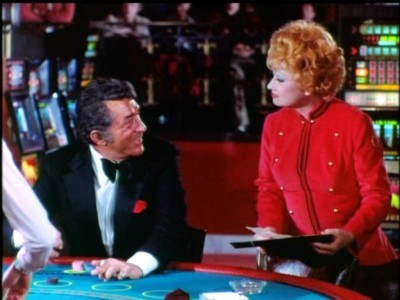
Lucy: “I have been a fan of yours from bobby socks to suphose.” Dean Martin: “Do you think those suphose would help my problem?” Lucy: “What's your problem?” Dean Martin: “I fall down a lot.”
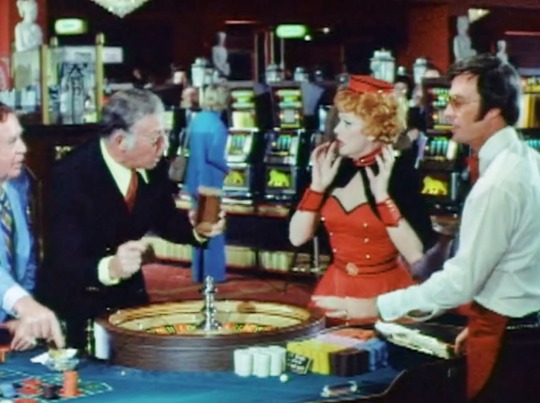
Lucy Collins gets a job as a cocktail waitress and causes chaos at the roulette tables. Lucy Ricardo had some luck (then lost it all) playing roulette in “Lucy Goes to Monte Carlo” (ILL S5;E25). In 1965, Lucy Carmichael had some luck (then lost it all) playing roulette in “Lucy Goes to Vegas” (TLS S3;E17).
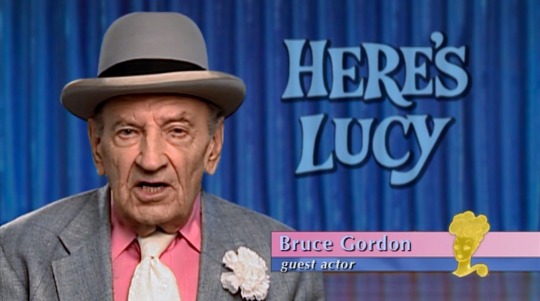
The character of Max Siegel (credited as Vogel) is likely named for gangster Bugsy Siegel, who was primarily responsible for the development of the Vegas strip in the 1950s. The fact that Max is being played by Bruce Gordon, famous for playing real-life gangster Frank Nitti on Desilu's “Untouchables,” pretty much assures the comparison. Naturally, Lucy overhears Siegel and his friends talking about “busted up dolls” and thinks they are talking about women, as the term was often used for females in the Damon Runyon musical Guys and Dolls.
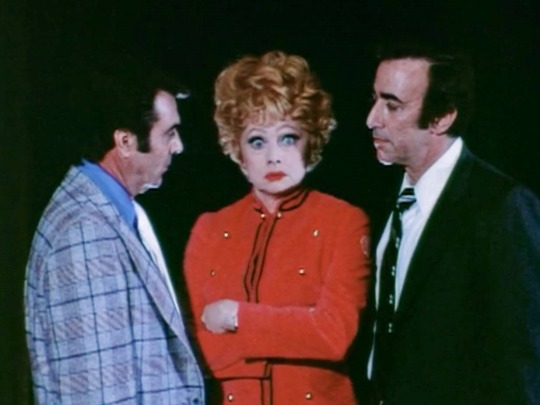
Max Siegel's gambling buddy is played by Paul Picerni, another “Untouchables” alumni. His character name is Packy West, which is an obscure reference to Lucy's pal Bob Hope. In July 1919, a 16-year-old Hope entered the Ohio State Boxing Amateurs tournament under the name “Packy East,” a nod to light and welterweight boxer Patrick “Packy” McFarland and Hope's own school, “East” High.
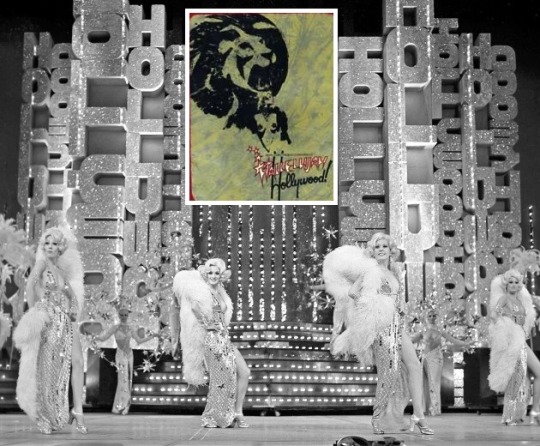
A chase sequence involving Lucy and Max Siegel's gambling buddies ends up backstage at “Hallelujah Hollywood,” a lavish stage show conceived, produced, and directed by Don Arden, It was a 3 million dollar tribute to classic MGM Hollywood musicals which played The Ziegfeld Room (which at the time was the largest stage in the world, with the largest backstage area in the world), at the MGM Grand Hotel in Las Vegas. The show opened in 1974, and ran until 1980. Its flamboyant finale was a tribute to the Ziegfeld Follies, featuring The Grand Stairway and The Great Ziegfeld Walk. The show featured over a 700 costumes (designed by Ray Aghayan and Bob Mackie). Lucille Ball played a lavishly attired Ziegfeld showgirl in the 1946 MGM film Ziegfeld Follies.
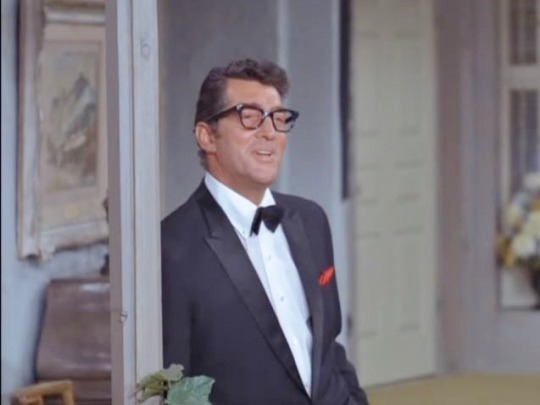
On stage with Lucy in the front row, Dean sings “Everybody Loves Somebody,” a song written in 1947 by Sam Coslow, Irving Taylor. Although it had been recorded by others, it was Dean Martin’s 1964 recording that hit #1 on the Billboard Pop Charts. He also sang it in “Lucy Dates Dean Martin” (TLS S4;E21, above). He then launches into “Tie a Yellow Ribbon 'Round the Old Oak Tree” written by Irwin Levine and L. Russell Brown in early 1973. It was a #1 hit for Tony Orlando and Dawn. The song was referred to by Steve Lawrence (but not sung) in “Lucy, the Peacemaker” (HL S6;E3).
This Date in Lucy History - March 1
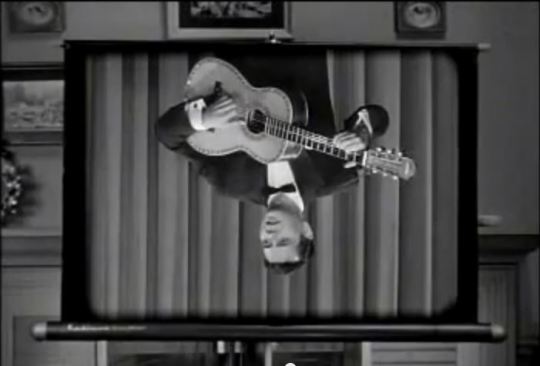
“Home Movies” (ILL S3;E20) – March 1, 1954
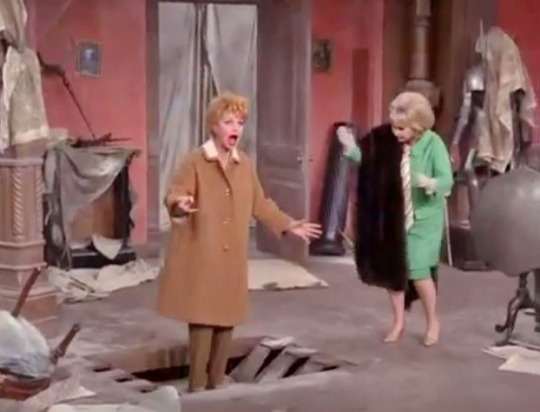
“Lucy and the Old Mansion” (TLS S3;E22) – March 1, 1965

This is one of the best post-”Lucy” outings of Lucille Ball's career. The reason is simple: She sticks close to what she does best – and she does it without the cloying addition of a laugh track. Had she decided to call the character Lucy Carter instead of Lucy Collins, it might well have been billed as a “Here's Lucy” special. As Lucy Carmichael, she did a similar filmed special titled “Lucy in London” during “The Lucy Show.” Lucy Carmichael dated Dean Martin for one episode, so it would only have worked with Lucy Carter. Perhaps Ball thought people wouldn't remember “Here's Lucy” a year later. But whatever she's named, this special gives us old school, celebrity-hunting, anything-goes, Lucy and it is terrific!
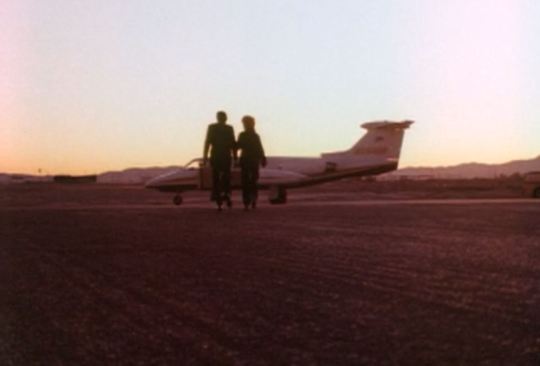
#Lucy Gets Lucky#Lucille Ball#Dean Martin#Las Vegas#MGM Grand#Vanda Barra#Bruce Gordon#Paul Picerni#Jack Donohue#Robert O'Brien#Jackie Coogan#Lee Delano#Ken Lane#Hal England#Joey Forman#Gino Conforti#Sid Gould#Gary Morton#Bonnie Boland#Joan Swift#Judith Wright#Jane Aull#Jay Jones#Roy Rowan#roulette#keno#Volare#Everybody Loves Somebody Sometimes#CBS#MPI Video
9 notes
·
View notes
Text
2020 Roundup
Woof. What a year.
When I think back on 2020, it's truly a blur --and not in the fun way, like a whirlwind trip across Europe or a two-week feature film shoot. When future generations ask me about the pandemic, my vague memory of 2020 will be 10 months all blended together while I wasted away in bed. Sleeping 12 out of 24 hours each day. Indulging in far too many midnight bowls of cereal. Watching more TV than ever humanly possible pre-quarantine. In a normal year, the film and television that I consume is more curated to quality work that inspires me to make my own. Going into 2021, I’m worried I’ve become too comfortable at home, watching crap. I’m worried I’ve lost my drive to be out here in LA, trying to make it in “showbiz.”
Now that it’s New Year’s Eve, I’ve decided to dust off my laptop and keep up with my annual tradition of blogging my accomplishments. I think it’s important, this year more than ever, to enumerate the few things that did happen to my career in 2020.
1. I started the year off (pre-pandemic) by submitting Shy Ruby’s “LIT” (the New Year’s Eve mini rom com that my sister Sarah and I made together in 2019) to some romance film festivals. Sadly, several were canceled or postponed indefinitely, but we were lucky to share our work with a few festivals that went virtual this year.
2. Before the lockdown, in February, “LIT” had its international premiere at a romance festival in Australia, which was screened in an actual cinema, but obviously it was too far for me to attend. I did get to attend the premiere screening of “CRYSTAL” --another romantic short film I worked on back in September 2019 that was being released on Valentine’s Day 2020.

3. “LIT” had its Canadian premiere in Toronto, where judges and audience members were asked to watch from home. We received lovely feedback through videos from sweet sweet Canadians who awarded “LIT” BEST PERFORMANCES. (Yay for me and my co-star, Al Rahn!) “LIT” was also selected for an annual summer film series in Toronto, which had to be held virtually this year. It was screened online in a block of female-directed shorts. (Yay for Sarah Schuessler!)

4. In May, Shy Ruby was given an entire section of a streaming app called BeeTV in the “made for women by women” category.
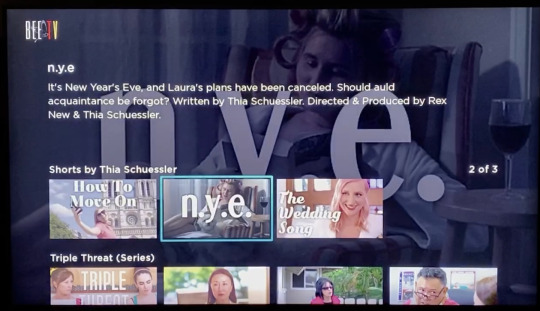
5. In the fall, I was hired to work on one of the first feature film productions back since quarantine (or so we bragged) called OJAI, shooting in one of my favorite cities just 15 minutes from where I was quarantining: Ojai, California. I got myself on the crew as Script Supervisor thanks to my trusty OCD. Once I met (and charmed) everyone on set, I was asked to be an extra in the background of a scene. Then another. And another, until finally, I had an actual character with three scenes with lines and a name! It was pretty funny to get so much encouragement after my scenes from my fellow crew members, telling me what a natural I was (they had no idea I was a trained actress). But I’m still happy if they only know me as a Scripty, because I absolutely loved doing that crazy crazy job.
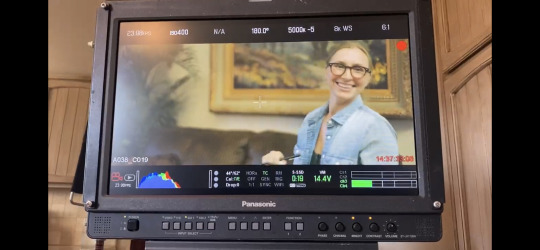
6. To finish off the year with a bang, I flew to New Orleans to shoot one ten-minute scene in an indie feature film. When the director cast me off my reel, he told me that I reminded him of Greta Gerwig (sold!). I don't know if he saw that I had theatre-training, but he said that they were going to be shooting long takes, so I’d be a great fit. I had no idea that the reason we’d be doing long takes was that we were shooting on film! Very exciting and nerve-racking, because like in live theatre, you have to get it right every time, and if you mess up, you have to make it work for the scene. There’s no room for an actor to stop and say, “Can we cut?” or “Can we go again?” So we rehearsed the full 10+ minute scene over and over for two hours until we had it in our bones. Finally, that camera started rolling, and damn was it loud! I hadn’t worked with an actual film camera since my cinematography class freshman year at USC (when I thought I wanted to be a DP, before I realized how insanely hard it is). So I had completely forgotten how loud that film roll is! We had all been rehearsing in our “screen actor” voices, aka basically whispering, because with microphones and a digital camera, you don’t have to project your voice. But once we were rolling, we realized our whispers weren’t going to cut it! So it was a very theatrical performance for my second role in a feature film this year. I’m very interested to see how it turns out. But I know my co-stars Jaren Mitchell & Jamie Neumann were killing it.
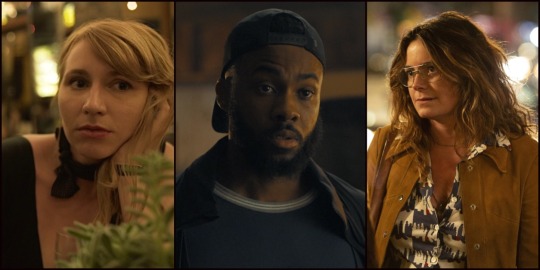
The Cast: Me, Jaren Mitchell (The Purge), Jamie Neumann (The Deuce)
I didn’t take any photos on set, but while I was in New Orleans, I did visit a photographer friend Josh Vine at the Bywater Art Lofts and we had some fun:
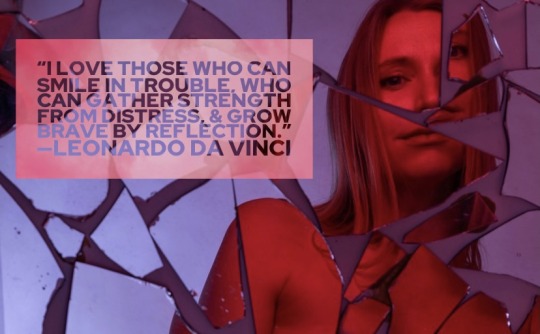
7. On a general note, throughout the year, I was invited to submit self-taped auditions for more projects than I can count, which is not usual. I filmed and submitted several “tapes” for the ones that I was excited about. I had 5 callbacks. I had 2 Zoom meetings with directors. I was offered 4 roles that I never even auditioned for. (2 of those 4 were never filmed, but it’s still flattering.) So, while I know I could’ve been hustling harder this year, I gotta say I’m impressed I even had these kinds of numbers during the pandemic, when I tried to consciously give myself permission NOT to hustle.
vimeo
I was also asked to record a portion of ABBA’s “Thank You for the Music” for one of those compilation videos that were so popular at the beginning of the pandemic. I don’t think the director ever posted it, though, because this was when the BLM movement was gaining momentum, and it would’ve been gauche to post a bunch of annoying musical-lovers singing about how lucky we are to be blonde --an actual line from this song is “I’ve been so lucky. I am the girl with golden hair. I want to sing it out to everybody. What a joy, what a life, what a chance!” So... yeah. That’s a big no no. Regardless, it was fun to sing in the closet that day, so here’s my bit!
All in all, in conclusion, I forgot how to write. No wonder I didn’t get past the concept phase of the next Shy Ruby script. Hopefully, I’ll get over my personal creative block in 2021. If not, apparently I can work on other people’s projects and it’s pretty fun! Oh man. My brain really atrophied from lack of use this year. PEACE 2020!
#Happy New Year#female filmmakers#actress#los angeles actress#film crew#short films#film festivals#script
0 notes
Link
Managing Film Superheroes Is About to Get a Lot Extra Difficult LOS ANGELES — Walter Hamada is just not a typical superhero wrangler. He doesn’t have a booming, fanboy-in-chief character. His modest dwelling workplace, a minimum of because it seems on Zoom, is gentle on the standard cape-and-cowl collectibles. Hollywood was not even his first calling: He got down to be a mechanical engineer. Because the president of DC Movies, nonetheless, Mr. Hamada, 52, manages the film careers of Surprise Lady, Batman, Cyborg, the Flash, Superman and each different DC Comics superhero. And the brand new course he has charted for them is dizzying. The costliest DC motion pictures (as much as 4 a yr, beginning in 2022) are designed for launch in theaters, Mr. Hamada stated. Further superhero movies (two yearly is the objective, maybe centered on riskier characters like Batgirl and Static Shock) will arrive completely on HBO Max, the fledgling streaming service owned by WarnerMedia. As well as, DC Movies, which is a part of Warner Bros., will work with filmmakers to develop film offshoots — TV collection that can run on HBO Max and interconnect with their big-screen endeavors. “With each film that we’re now, we’re considering, ‘What’s the potential Max spinoff?’” Mr. Hamada stated. If you happen to thought there was a glut of superheroes earlier than, simply wait. To make all of the story strains work, DC Movies will introduce film audiences to a comics idea referred to as the multiverse: parallel worlds the place completely different variations of the identical character exist concurrently. Developing, as an example, Warner Bros. could have two completely different movie sagas involving Batman — performed by two completely different actors — operating on the identical time. The sophisticated plan entails a pointy improve in manufacturing. Final yr, Warner Bros. made two live-action superhero motion pictures, “Joker” and “Shazam!” In 2018, there was solely “Aquaman.” All three have been smash hits, underscoring the monetary alternative of constructing extra. For numerous causes, together with inventive misfires and administration turnover at DC Movies (Mr. Hamada took over in 2018), Warner Bros. has badly trailed Disney-owned Marvel on the field workplace. During the last decade, Warner Bros. has generated $8 billion in worldwide superhero ticket gross sales, together with $36 million from “Surprise Lady 1984” over the weekend; Marvel has taken in $20.6 billion. Suffice it to say, Warner Bros., which invented the big-budget superhero film in 1978 with “Superman,” has been beneath stress to get its act collectively. Disney has succeeded partly as a result of its divisions collaborate in a means that siloed Warner Bros. by no means has. However that’s altering. AT&T mandated higher cross-company synergy when it took over WarnerMedia in 2018. “Up to now, we have been so secretive,” Mr. Hamada stated. “It was stunning to me, for instance, how few folks on the firm have been truly allowed to learn scripts for the films we’re making.” Greater than ever, studios are leaning on pre-established characters and types — particularly if their company dad and mom are constructing streaming companies. HBO Max has 12.6 million subscriber activations. Netflix has 195 million. How do you delight Wall Avenue and shortly shut the hole? You begin by placing your superheroes to work. This month, Disney introduced 100 new motion pictures and reveals for the following few years, most of them headed on to its Disney+ streaming service, which has 87 million subscribers. Marvel is chipping in 11 movies and 11 tv reveals, together with “WandaVision,” which arrives on Jan. 15 and finds Elizabeth Olsen reprising her Scarlet Witch position from the “Avengers” franchise. Warner Bros. has a minimum of as many comics-based motion pictures in numerous phases of gestation, together with a “Suicide Squad” sequel; “The Batman,” by which Robert Pattinson (“Twilight”) performs the Caped Crusader; and “Black Adam,” starring Dwayne Johnson because the villainous title character. Tv spinoffs from “The Batman” and “The Suicide Squad” are headed to HBO Max. WarnerMedia’s conventional tv division has roughly 25 further live-action and animated superhero reveals, together with “Superman & Lois,” which arrives on the CW community in February. Sony Footage Leisure has its personal superhero slate, with a minimum of two extra “Spider-Man” motion pictures within the works; “Morbius,” starring Jared Leto as a pseudo-vampire; and a sequel to “Venom,” which price $100 million to make in 2018 and picked up $856 million worldwide. Sony additionally has a collection of superhero TV reveals headed for Amazon Prime Video. And don’t overlook Valiant Leisure, which is popping comics properties reminiscent of “Harbinger,” about superpowered youngsters, into motion pictures with companions like Paramount Footage. Superheroes have lengthy been Hollywood’s most dependable moneymakers, particularly when gross sales of associated merchandise are included. (Surprise Lady tiara for cats, on sale for $59.50.) However how a lot dashing spandex and computer-generated visible results can audiences take? Greater than you assume, stated David A. Gross, who runs Franchise Leisure Analysis, a movie consultancy. “If the tales are nicely written and the manufacturing values are robust,” he stated, “then there will likely be little signal of fatigue.” Maybe the largest problem going through Warner Bros. entails the latest prioritization of HBO Max. “The danger is, will watching these motion pictures first on tv degrade the leisure expertise, and later the worth,” Mr. Gross stated. “For a person film, there isn’t a extra worthwhile enterprise mannequin than a profitable theatrical launch — creating the largest popular culture occasion doable. It’s the locomotive that pulls your complete prepare: merchandise, theme park licensing, different earnings.” On Friday, Warner Bros. launched “Surprise Lady 1984” in North America, the place it collected $16.7 million. Citing the coronavirus pandemic (solely 39 % of cinemas in america are open), the studio concurrently distributed the movie in theaters and on HBO Max. Warner Bros. will launch its complete 2021 slate in the identical hybrid vogue. WarnerMedia offered solely obscure details about the sequel’s efficiency on HBO Max, saying in a information launch that “thousands and thousands” of subscribers watched it on Friday. Andy Forssell, WarnerMedia’s direct-to-consumer normal supervisor, stated the film “exceeded our expectations throughout all of our key viewing and subscriber metrics.” Up to now, “Surprise Lady 1984” has collected $85 million worldwide, with $68.3 million coming from cinemas abroad, the place HBO Max doesn’t but exist. The movie, starring Gal Gadot and directed by Patty Jenkins, price a minimum of $200 million to make and an estimated $100 million to market worldwide. It obtained a lot weaker critiques than its collection predecessor. Toby Emmerich, president of the Warner Bros. Footage Group, stated on Sunday that he had “fast-tracked” a 3rd Surprise Lady film. “Our actual life Surprise Ladies — Gal and Patty — will return to conclude the long-planned theatrical trilogy,” Mr. Emmerich stated. Mr. Hamada rose to energy by way of New Line, a Warner Bros. division that principally makes midbudget horror movies and comedies. Amongst different achievements, he labored with the filmmaker James Wan and others to construct “The Conjuring” (2013) right into a six-film “world” with $1.8 billion in international ticket gross sales. (“The Conjuring: The Satan Made Me Do It” arrives in June.) “A variety of instances in studio conferences, executives simply repeat buzzwords, and it turns into a joke,” Mr. Wan stated. “Walt all the time brings one thing constructive, helpful and vital to the desk. He talks to me in a language that I perceive.” When Mr. Hamada arrived at DC Movies in 2018, the division was in pressing want of stability. Two terrifyingly costly motion pictures, “Batman v Superman: Daybreak of Justice” (2016) and “Justice League” (2017), each directed by Zack Snyder, have been deemed virtually unwatchable by critics. Ben Affleck, who performed Batman within the movies, needed to maneuver on, complicating sequel plans. On the identical time, filmmakers have been growing different DC motion pictures that had nothing to do with the prevailing story strains — and, actually, contradicted a few of them. Mr. Hamada and Mr. Emmerich had two choices: Work out find out how to make the assorted story strains and character incarnations coexist or begin over. The reply is the multiverse. Boiled down, it signifies that some characters (Surprise Lady as portrayed by Ms. Gadot, as an example) will proceed their adventures on Earth 1, whereas new incarnations (Mr. Pattinson as “The Batman”) will populate Earth 2. “The Flash,” a movie set for launch in theaters in 2022, will hyperlink the 2 universes and have two Batmans, with Mr. Affleck returning as one and Michael Keaton returning as the opposite. Mr. Keaton performed Batman in 1989 and 1992. To complicate issues additional, HBO Max gave Mr. Snyder greater than $70 million to recut his “Justice League” and broaden it with new footage. Mr. Snyder and Warner Bros. had clashed over his authentic imaginative and prescient, which the studio deemed overly grim, leading to reshoots dealt with by a special director, Joss Whedon. (That didn’t go nicely, both.) “Zack Snyder’s Justice League,” now 4 hours lengthy, will arrive in segments on HBO Max in March. A minimum of for now, Mr. Snyder is just not a part of the brand new DC Movies blueprint, with studio executives describing his HBO Max mission as a storytelling cul-de-sac — a road that leads nowhere. The multiverse idea has labored on tv, however it’s a dangerous technique for giant screens. These motion pictures want to draw the widest viewers doable to justify their price, and an excessive amount of of a comic book nerd sensibility generally is a turnoff. New actors can take over a personality; James Bond is one of the best instance. However a number of Gothams spinning in theaters? “I don’t assume anybody else has ever tried this,” Mr. Hamada stated. “However audiences are subtle sufficient to know it. If we make good motion pictures, they’ll go together with it.” Supply hyperlink #Complicated #Lot #Managing #Movie #Superheroes
0 notes
Text
Leaving and Returning to Bennington
Hi all!
My name is Vivian and I’m currently a junior here at Bennington (or maybe I’m a sophomore? Still trying to figure that out) studying screenwriting and film. I’m going to be starting a post series on my experience as a pseudo-transfer student at Bennington where I’ll share with you all why I left Bennington after my freshman year, and why I decided to return for my junior year.
So why not start now! Here’s a little background for you:
Like many students going into their first year of college, I had no idea what I wanted my focus to be. My personal essay for the Common Application was all about how I was pressured to go into science but loved painting, and I wanted to experiment with both in college. When I decided on Bennington, I was excited to try out every subject that interested me, which resulted in a hodgepodge of classes: architecture, video, astronomy, biology, psychology etc, etc.
But one class made me realize what it was I wanted to pursue in college and my life after school: screenwriting. I had always been interested in film, seeing as both my parents were film fanatics who raised me on silent movies and classic cinema, but I didn’t realize that screenwriting would come so naturally to me.
Needless to say, my enchantment lead me to realize that Bennington didn’t offer multiple screenwriting classes at a time. All of a sudden I was so sure of what I wanted to study for the next three years, and I felt like I didn’t have the parameters to do so. Thus began my search for a film school to transfer to. During my first Field Work Term, while I was working as a casting intern at CBS, I realized that southern California was the place to be if I wanted to pursue film.
In the fall of 2019 I officially transferred into a well-known film school in southern California as a screenwriting major. I loved studying only film classes and learning the ins and outs of the industry. But there was something missing. I didn’t feel challenged in any of my classes. I was having so much fun working as a script supervisor on my friends’ projects and having my own scripts be chosen for senior thesis films, yet I still felt out of place. I still craved a more dynamic learning experience, where I didn’t have to worry about graduation requirements (general education classes included) and getting enough credits in time to graduate in three years.
Now, I’m sure you can guess what happened next, seeing as I’m writing this as a current Bennington student. I ended my leave of absence from Bennington and officially dropped out of film school, deciding on my return just as a little thing called COVID-19 forced me to return to my hometown of Denver in March.
This was by far the hardest decision I’ve had to make while in college. On one hand, I was getting the film school experience I had always hoped for. On the other, I felt like I wasn’t getting what I wanted out of my time in college. I wanted to be challenged to take classes outside of my discipline and to find ways to integrate them with film and screenwriting, and the place where I could do that was where I had started, back at Bennington.
So yes, I’m back, as a sophomore or junior, I’m not even sure. But I’m sharing my experience, hoping I can help you reading this, whether you’re a prospective student, a parent, or considering transferring to Bennington. Maybe this post, and the many more to come (every Wednesday so stay tuned) can help you understand what it’s really like to attend Bennington and why it’s been such a vital place to my college journey.
Here’s a photo to leave you with of the house I lived in my freshman year:

-Viv ‘22
0 notes
Photo
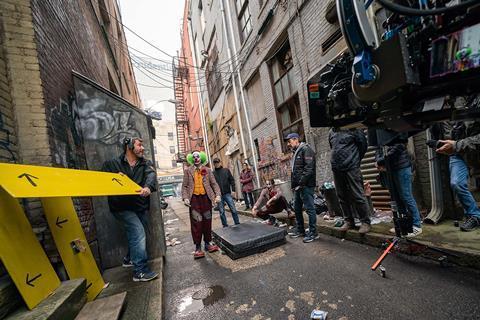
CINEMATOGRAPHY OSCAR NOMINEES ON AUTHENTICITY AND AVOIDING VFX https://ift.tt/2OZteQ0
The DoPs behind 1917, Joker, The Irishman, Once Upon A Time… In Hollywood and The Lighthouse reflect on the bold choices they made to bring dynamic visions to the screen.
Cinematographers are moving both forward and backward in technological terms this year, ironically in pursuit of the same goal: authenticity.
Avoiding VFX and instead opting to shoot reality has been a central theme. Robert Richardson used real Los Angeles backgrounds for the driving scenes in Quentin Tarantino’s Once Upon A Time… In Hollywood. Roger Deakins contended with real explosions and fires in Sam Mendes’s 1917.
Rigging equipment has also been a common talking point for DoPs in 2019. Deakins pushed the boundaries of stabilising devices to enable extended tracking shots for the continuous-take approach of 1917, while Papamichael explored the limits of large-format cameras, putting them in positions that would have been impossible a few years ago (on a low mounted arm attached to a racing car, in one case). Perhaps most complicated of all was Rodrigo Prieto’s “three-headed monster”, a three-camera set-up used to aid the CGI de-ageing process for Martin Scorsese’s The Irishman.
These and other top cinematographers no longer debate analogue versus digital, with plenty saying it is digital and film, rather than digital or film. This is in part due to rapid advances in camera technology by companies like Arri, with films including 1917 utilising a large-format digital camera that, according to Deakins, is as good as any film camera.
Mixing light sources has also been in vogue, with Lawrence Sher using harsh fluorescents and urban streetlamps to create the heightened eeriness of Joker and grittiness of the city.
Whether they are using old-school filmmaking techniques or the latest technology, these cinematographers are creating brave new worlds for audiences and their craft.
Lawrence Sher - Joker
SOURCE: NIKO TAVERNISE
LAWRENCE SHER ON THE ‘JOKER’ SET
Lawrence Sher has been known primarily for his work on comedies including Todd Phillips’ The Hangover trilogy, Paul, The Dictator and I Love You, Man, before he reunited with Phillips to create the dark, sinister world of Joker.
While Joaquin Phoenix’s performance threw up regular surprises during the shoot, Sher was a ready and willing partner for the award-winning actor, and says his own work plumbing the depths of the DC Comics arch villain — which won him Camerimage’s Golden Frog award in November — is not as big a departure as it initially appears.
What was the shooting schedule like for Joker?I read the script about a year before, did an early scout in March [2018] and then prepped for 10 weeks. The shoot lasted 60 days with one day of shooting lost due to issues with the LED lighting on the New York City subway sequence.
What was your approach to Joker’s colour scheme?My main colour palette was drawn first and foremost from real lighting fixtures that exist in the city. I also looked at movies of that era in which the movie takes place [1981], the colour of the film stock at the time and how it would capture all of this mixed light. The colour palette is a mix of utilitarian light and uncorrected fluorescents — we kept their crappy look so it wouldn’t be clean.
We changed out some of the streetlights so they would be sodium vapour, as opposed to LED which many streetlights are now. When we shot at dusk, you have that blueish light that mixes with the sodium vapours and suddenly you have the colours that I think people associate with the movie: the blues, greens, oranges and greys. You can see the messiness of the city.
How did you approach working with the actors to capture their performances?On set we maintain a certain rhythm for the actors. If they have to go back to trailer, even for 20 minutes, there is a momentum loss. So if I can shoot fast, they never have to leave the set. It helps everybody, especially the scene.
Todd Phillips encouraged improvisation, for instance the bathroom scene where Joker starts to dance after killing the men in the subway. Did that approach affect the shooting?That shot was improvisational. He was going to come into the bathroom, hide the gun, wash off the make-up and stand in the mirror and laugh. But with Todd, the movie is constantly being rewritten so you are discovering it as you make it. All of the planning is there but he’s always flexible. With that scene, he wanted to try it non-verbally. He played a piece of music — he didn’t tell the camera operator what was going to happen — and we got that scene in one take.
Was your approach to Joker different to your other films?My lighting approach is not any different. We are not servicing comedy [in Joker]. Some of the compositions come to the forefront perhaps, more than in my previous works. But my approach, particularly with Todd, is to allow for flexibility and freedom. A lot of it is co-ordination with production design and needing the freedom to be able to light a big space. To have the world lit as opposed to focused on a specific person on a mark.
Which sequence was the most challenging to shoot?The subway scene where he kills three Wall Street guys. We shot on a stage and with LED panels. It was challenging because while we had more money than other independent films, it’s still a budget issue. Todd had always described it as a fever dream — this kind of escalating light show. We accomplished it with a very expensive row of LED lights on both sides, though not too many LEDs because we tried to keep to the light as they had it in the 1970s and ’80s. I was taking the New York subway all the time and shooting with my iPhone to figure out the lighting for that scene.
How did you find working with Joaquin Phoenix?It was a transformative experience watching him act and getting to know him. I didn’t say anything to him during prep; he was a little bit intimidating. He apologised to me for acting weird and I said, “No man, do your thing.” We grew to have a good relationship, where we would challenge each other with the choices on set.
Rodrigo Prieto - The Irishman
SOURCE: NIKO TAVERNISE PICTURES
RODRIGO PRIETO WITH MARTIN SCORSESE ON THE SET OF ‘THE IRISHMAN’
Mexican cinematographer Rodrigo Prieto has worked alongside acclaimed directors including Alejandro Gonzalez Inarritu (21 Grams, Babel), Ang Lee (Brokeback Mountain) and Pedro Almodovar (Broken Embraces). The Irishman marks his third feature with Martin Scorsese, after The Wolf Of Wall Street and Silence.
Prieto describes the epic crime drama as one of his most challenging projects to date: an intensive 108-day shoot involving more than 300 set-ups, with the added challenge of managing a complicated CGI de-ageing process for the main actors, which incorporated a “three-headed monster” camera rig.
Although Martin Scorsese is an avid supporter of shooting on film, you had to use digital as well to achieve the de-ageing technique.Yes, 56% was shot on digital and 44% on film. The overall look I thought had to be based on film negative because of the memory aspect. Scorsese talked about home movies, this sensation of remembering the past through images, so I developed looks based on still photography, Kodachrome and Ektachrome.
For the visual effects, it was necessary to shoot with digital cameras where the face had to be replaced with CGI. Visual-effects supervisor Pablo Helman from Industrial Light & Magic needed three cameras synched for every angle and the shutters had to all be in perfect sync. The challenge of getting three cameras to move in unison meant that using film cameras from a practical standpoint was nearly impossible.
Was it Pablo Helman who came up with the idea of using CGI to de-age the actors?Yes, when we were shooting Silence, Pablo said he thought there was a way to make actors look younger through computer-generated imagery. He came up with a three-headed rig where the central camera, the Red Helium, is capturing the shot and two witness cameras, Arri Alexa Minis, are sat on either side of the main camera to read the infrared map of the actors’ faces. We called it the “three-headed monster”.
Can you talk about the stages of the de-ageing process and how that was achieved?There are several different stages. Prosthetics were used to make the actors look older. Make-up could make the actors look younger, for example making a 70-year-old actor look like they were in their 50s. VFX and CGI de-ageing were used when the actors are close to the transition to make-up, and that was complicated as the ageing transition was subtle, say, only a few months in time rather than several years. The technical and make-up teams had to be sure the transition was smooth.
How did you map out the visual arc of a film that spans five decades over three-and-a-half hours?We did not want to make it over-stylised or flashy. Scorsese wanted the camera to reflect the way Frank Sheeran [played by Robert De Niro] approached his job, which was simple, methodical and repetitive. The audience sees the same shots with Frank — the camera pans around at the same angle. When we were with other characters, like crazy Joe Gallo, the camera behaves differently.
How did the fact the film was made to screen first and foremost on Netflix affect the way it was shot?For the most part it wasn’t a consideration. Scorsese designs his shots in a way that helps the story. The one thing we did change was the aspect ratio. Normally, Scorsese would use widescreen but in this case we thought we had better use 1.85 because it would fill up home screens. It also fit Frank’s personality more, as well as helping to show the height difference between the characters. Frank was a tall man so we made special shoes for De Niro and boxes with cushions where he sat. For accuracy, we also changed his eye colour to blue.
You were working on a tight schedule. Was there any room for improvisation during the shoot?When the actors want to try something different, Scorsese will almost always go for it. Near the end of the film, Frank is looking as his car is being washed and it’s a defining moment. We lit the scene for him standing and always looking at the car. Then De Niro said, “I always kind of imagined being inside the car.” So Marty said, “Oh, OK, let’s do that.” I had to set it up in three seconds. As soon as we shot it, I could see that his performance was there.
Jarin Blaschke - The Lighthouse
SOURCE: CHRIS REARDON
JARIN BLASCHKE ON THE SET OF ‘THE LIGHTHOUSE’
Born in the Los Angeles suburbs, Jarin Blaschke continues a collaboration with filmmaker Robert Eggers that began on the latter’s 2008 short The Tell-Tale Heart and encompassed his haunting 2015 feature debut The Witch. For The Lighthouse, the pair conjured up another strange and foreboding world: a mysterious New England island in the 1890s, inhabited by lighthouse keepers Robert Pattinson and Willem Dafoe. Blaschke deployed innovative lighting and lensing solutions to take on not just the wilds of authentic Nova Scotia locations, but the demands of dark, cramped, wet settings.
How many years did it take to develop the concept of The Lighthouse?I didn’t have a script until a month or two before prep, but Rob first pitched this idea probably three years before that. With him, it starts with atmosphere, so my subconscious was working on the atmosphere at the same time that we were developing The Witch. We didn’t know which one would go [first] and then The Witch happened.
The Lighthouse was shot in black and white, with a 1.19:1 aspect ratio, on Kodak Double X 35mm film format, which dates from the 1950s. How much testing did you do?There was a battery of tests I put myself through, like testing real oil lamps to see how to do it with an electrical lamp. I had to know how to light differently: I bolstered the light levels by 15, sometimes 20 times, and the film stock had to be tested in rain, backlit to know where it looks like night but also doesn’t look overly lit.
What logistical challenges did you face shooting on location in Nova Scotia?The weather was bad and added about four days to our schedule. It could have been worse but we had a covered set. We couldn’t do a night scene one night because it was too windy and even with day scenes, you have frames where you need to bounce light back using a giant sail and it gets a little hairy. There was a lot of eating cold porridge in the dark in the morning and the breakfast tent was going to blow away. We had to build this hardcore tent just to have breakfast. It adds to the movie, I hope.
In exploring the space between reality and insanity in The Lighthouse, did you use special lenses for certain scenes?I went to Panavision. I know vintage lenses are really trendy right now. I had some experience with the usual suspects: Cooke Series 2s and Super Baltars [used in The Godfather and The Birds]. They put original Baltars in front of me and I fell in love with them. So we had old Baltars from the 1930s. We used the first high-speed portrait lens of the 19th century for special shots, like [Robert Pattinson] having sex with a mermaid, the hand going down the body. Stuff that was super heightened where we could get away with it.
How did your collaboration with Eggers inspire you for certain images?I’ve known Rob for 12 years so I knew there were going to be a lot of symmetrical two-shots. There is one direct reference to a Sascha Schneider painting. And the last scene in the film is in the lookbook. Those are the only two references, everything else I tried to create. I know Rob watched all kinds of crazy stuff, like videos with shark genitals.
You are also working on Eggers’ next film, The Northman. What can you say about it?Rob says very little. It’s a bigger movie than the others. I can say it’s a Viking revenge movie and we are shooting in Europe. I think he feels a responsibility to do a trilogy. It’s dark and unusually violent.
Robert Richardson - Once Upon A Time… In Hollywood
SOURCE: ANDREW COOPER
ROBERT RICHARDSON WITH QUENTIN TARANTINO
A nine-time Oscar nominee and three-time winner, Robert Richardson’s career has been closely associated with three filmmakers: Oliver Stone, Martin Scorsese and Quentin Tarantino. For Stone, he photographed 11 features in a little over a decade, winning the Oscar for JFK; two of his five collaborations with Scorsese brought him Oscar statuettes (The Aviator and Hugo); and he shared Camerimage’s director and cinematographer duo award with Tarantino for their work across six films including Once Upon A Time… In Hollywood. Richardson is known across the industry for pushing boundaries and doing whatever it takes to achieve a shot.
How would you typify your relationship with Quentin Tarantino?A relationship with a director is a marriage. I have been fortunate enough to forge a series of relationships with all of the directors I’ve worked with from the beginning. It’s the idea that you are linked together and begin to understand how the other speaks, what you like and don’t like. It’s so important. Collaboration at that level is why rock ‘n’ roll bands are the very best when they hold out and play together as the same team as long as they can. The Beatles wouldn’t have been who they were without John, Paul, George and Ringo.
What is your creative process like with Tarantino once you’ve read the script?Quentin was in the room when I first read the [Once Upon A Time… In Hollywood] script. It took me a substantial time to read it. After we had dinner, we made notes and then he played music: ‘Good Thing’ from Paul Revere & The Raiders, ‘Mrs Robinson’ from Simon & Garfunkel, ‘California Dreamin’ from Jose Feliciano. The soundtrack is like a character in the film; it leads you, it is continuously playing from a radio station. The music helped build on the emotion of the characters and the movement of the film.
What is Tarantino’s process for selecting shots?He only shoots on film, he only processes on film and he only watches dailies on film. He doesn’t see digital replication until he gets to the Avid in the editing room. Our process is to shoot a film chemically, process and print chemically, and that print is duplicated on a 35mm projector. You then project the film as well as the digital intermediate, and they need to replicate each other perfectly, otherwise Quentin doesn’t want to discuss it. It’s definitely challenging, but that’s how we get to be better artists.
And when filming, Tarantino always sits beside the camera?Quentin is a director not a selector. He sits beside the camera. There is no video village, there is no video replay. You don’t go back and look at something. He watches the actors and their performance. If he’s got it, it’s over. If there is an error, something happened or an actor needs a retake, he will listen to why, but he will always choose in the editorial process the very best performance. The film is golden in its use of warm, saturated colours. We wanted to make a film that was about California and sunshine. On my side, it’s a combination of film stock, lenses and light. For the golden exteriors, we used a combination of Panavision’s anamorphic lenses and golden lenses.
You are known for using myriad film stocks to achieve different looks. What did you use for this film?We shot 35mm anamorphic, except when shooting Rick Dalton’s western television series, then we were 35mm black and white, and we shot with spherical zooms mostly in 1.33. There were also two sequences at Sharon Tate and Roman Polanski’s home that we shot on Kodak Ektachrome, one in 16mm black and white and the other on Super8mm colour.
Roger Deakins - 1917
SOURCE: FRANÇOIS DUHAMEL/UNIVERSAL PICTURES AND DREAMWORKS PICTURES
ROGER DEAKINS ON THE SET OF ‘1917’
Winner of four Baftas and an Oscar (secured last year for Blade Runner 2049 on his 14th nomination), the prolific Deakins has been an influential figure in cinematography since he burst on to the scene with 1984. On that film he pioneered a bleach bypass process to achieve a washed-out look that went on to be used in films including Se7en and Saving Private Ryan. He has also been at the forefront of embracing digital filming methods, not least on Sam Mendes’s Skyfall.
He reunites with Mendes on 1917, which follows two soldiers on a mission to avert a strategic disaster during the First World War. Deakins and Mendes had to invent new ways to move the camera to create the impression that the narrative was unfolding in a single, continuous shot — an innovative feat that puts the audience on the frontline.
How did you achieve so much fluidity in single camera shooting?We used a lot of different rigs. Probably 60% of the film was shot on a stabilised remote head. Some shots are done on the Trinity [Arri stabiliser rig], some are done on the conventional Steadicam and there’s even a drone. But the majority of the film is done remotely with a stabilised head that’s either carried by the grips or a tracking vehicle on the end of a crane or on a wire.
How did you plan such incredible camera movement while keeping up the illusion of one continuous shot?Sometimes it’s put on to a wire and then moved, or it’s taken off the wire and then someone carries it or runs with it so it all becomes one shot. The reason was not only to sustain the scene but also that we didn’t want to cut in some of the obvious places.
Were you pushing the existing technology, or did you have to create new methods?We created some of our own. For instance, running with speed down a trench in front of two characters like we were, you can’t do that on Steadicam. So a Steadicam operator came up with the design of little mini-posts with gyros on them, and we put a very small remote head on top. He would run down the trench facing forward with the camera facing backwards over his shoulder, which I was remotely operating. Then he’d get to a corner in the trench and segue around so he started on a front shot.
How did you communicate with the operating team on the ground?I’d be operating remotely. I don’t like wearing earphones because I’m constantly running to and from the set talking to grips or whoever. James [Deakins’ wife and digital workflow consultant] would be on set wearing earphones and relaying messages to the crew. During a shot, she would say things to the operating team like “faster, faster” or “you are getting too close, a little to the left”. It helped because they couldn’t see what the camera was seeing.
How integral were the four months of rehearsals?The trick was for Sam and me to figure out what we wanted to do: where we wanted the camera and to finesse the camera moves relative to the actors. We tested specific rigs on specific kinds of shots. That was the big trick, really, practising with different pieces of equipment. We also went to Salisbury Plain and mapped out all the shots we wanted before anything was dug or built, such as the farmhouse.
How was the weather integral to the film?Being such an exterior movie, we were very dependent on the light and the weather. And we realised you can’t really light it. If you were running down a trench and turning around 360 degrees, there’s nowhere to put a light. Because we were shooting in story order, we had to shoot in cloud to get the continuity from scene to scene. Some mornings the sun would be out and we couldn’t shoot so we would rehearse instead.
The shooting in 1917 had to be in sync with the editing. How did that process work?Sam had to choose the take he wanted before we did the next shot because we had to match them, like the beginning of the B side had to match the end of the A side. That frame and the camera movement and the position of the actors had to match exactly. We would have the take on playback, and set up the incoming take and keep playing the beginning to match the end of the shot. That’s the great thing about video assist and being able to overlay the two images.
You were one of the early adopters of digital shooting. What won you over?
The Arri Alexa tipped the point for me between film and digital. I find it a bit of a non-argument. I think it’s what’s in the frame and where you point the camera.
0 notes
Photo
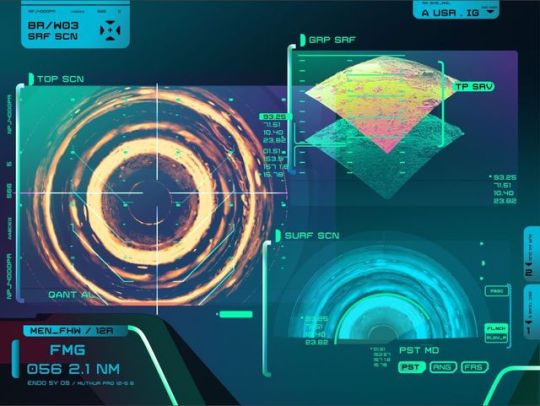









PROMETHEUS: DAVID SHELDON-HICKS – CREATIVE DIRECTOR & CO-FOUNDER – TERRITORY STUDIO
VINCENT FREI | 19 July, 2012
Prior to founding Territory Studio in 2012 with Lee Fasciani and Nick Glover, David Sheldon-Hicks worked on projects like CASINO ROYALE or THE DARK KNIGHT but also on CALL OF DUTY: WORLD AT WAR and MODERN WARFARE 2.
What is your background? Territory set up in 2010 with myself, Lee Fasciani and Nick Glover as partners. We’ve quickly grown working on Formula 1 spots for McLaren and cinematic work for KILLZONE 3. We see ourselves as a creative agency that work across branding, digital and motion, priding ourselves on the craft of the work, with a strong foundation in traditional graphic design. My focus is leading the motion side of things but we quite often find ourselves working on projects that span all 3 disciplines.
How did Territory Studio got involved on this show? I have a freelance history before setting up Territory that spans film screens on CASINO ROYALE and THE DARK KNIGHT and also cut-scene work for games such as MODERN WARFARE 2. A friend of a friend had mentioned my name to George Simons the computer screens supervisor, who ultimately ended up commissioning Territory.
What have you done on this project? We collaborated with George Simons and Shaun Yue on the overall look for screens on the bridge of Prometheus. We were also responsible for the design and animation of screens in the medical area, social area, escape pods, some of the Rover vehicle screens. We also solely completed post screens for Cryo Pod, DNA tablets and screens, Helmet Cam HUDs and load of other stuff. Around 250 designs and animations to go on-set. We then handed over these animations to the very clever people at Compuhire, headed up by Mark Jordan, who’s engineers and technicians made sure it was all physically run through to the set and worked with the rest of the art departments designs.
How was the collaboration with director Ridley Scott? He’s incredibly inspiring and encouraging to work with. He’s creative briefs were very loose, but he was always demanding in final execution and pushing us to think outside of the normal screen design look. He continually questioned our thinking and was always asking us for originality. I believe the entire Territory team found the process creatively rewarding. Plus we knew our work was going to be shot beautifully against other stunning visual produced by the rest of the art department and VFX.
What was his approach about the screen graphics? He wanted a more high tech look to the screens in this film from the original ALIEN film. This ship was meant to feel much more advanced as it represented an expensive research facility. Designs for screens in the medical areas and to some degree the bridge used node tree’s like you’d see in Nuke or Flame UI’s. This came from Ridleys reference of under water coral reefs and complex organic natural forms.
The social areas Ridley proposed abstract fine artists such as Paul Klee. We created abstract animations, that were meant to stimulate the crews mood and emotions. We’d take nutritional data of the food the crew were eating, and abstract the data so much it became much more suggestive and emotive layered textures.
In the more functional areas such as lifts and corridors we took reference from Ron Cobbs original functional designs in ALIEN. Bright yellow dials, data and warning info was displayed in bold, isometric frameworks to convey a more utilitarian and functional aesthetic.
Which references and indications did he give to you? It was really varied as mentioned. Ridley would talk at length about ideas that were being used throughout the art department, maybe a texture or form being used in part of the engineers head, or a pottery design to go in the eating area as a springboard for our computer interface concepts. Sonja Klaus would also be a great part of the process suggesting materials going into the surrounding consoles, tables chairs and other furnishings that could inspire our own views.
How did you approach this project? With a very hard work ethic! We always start with research. Based on that visual exploration we start to version out many, many designs. Once we’ve explored these designs as best we can we get to work on all the 2d and 3d animation. At all points through this process we’re thinking about how we can best convey relevant narrative purely through quite technical data visualisations and 3d imagery. Its this pride and focus on the content that we take very seriously.
Did you take some stuffs and references from ALIEN for the screen design? We couldn’t help but be aware of the original ALIEN film in working on PROMETHEUS. Everyone in our team trained as graphic designers so knew of the original title sequence and designs of Ron Cobb which are both timeless and beautiful. We sneaked in little elements here and there such as bold crosshairs in the corners of screens, and simple iconography design throughout.
The various screens features a lot of informations. Can you tell us more about the screen content concepts and their creation such as the cryo-pod? We created the HUD display for the cryo-pod late in production as a post shot. We were given the background plate and told to make something cool that would feature the name of the person asleep in the cryo-pod. Briefs for the UI work were always fairly loose, letting the script dictate key plot points for the content.
The rushes we were sent to add our UI graphics to had the character David wearing a funky yellow visor helmet, doing something with the interface on the surface of the glass window, monitoring Shaw’s dreams. Quite a fun one this as it’s not your typical computer readout on a science research space ship! We sketched out a bunch of different ideas. Maybe we could see the dreams as fragments of images or represent the dreams with a series of abstract shapes and patterns. We talked through the ideas and realised we wanted the system to look as though it’s purely monitoring the person inside, as it’s David’s Visor that ultimately gives the view into the dream. We wanted the interface to come from the same graphic language we’d already put in place for the medical area. We used floating control points for David to interact with, and there movements influenced tendrils that connected back to the main interface. We had sensors float over the person, taking measurements, again connected by tendril/node cables. Small amounts of data would flow around the screen, creating a route and logic to the system and processing of information. In the end we were really pleased with how this UI turned out. It’s a great example of the organic style we developed and used throughout every screen and HUD in his film.
How did you help the actors to interacts with the screen contents on-set? Most of our screens weren’t post so they could see and interact with them for real. We got a really good reaction from the actors because of this. We didn’t get the issue of the actors looking at the wrong point on a glass screen projection, because the Compuhire guys did it for real on-set. It looked great.
Which softwares did you used to create your screen graphics shots? Photoshop and Illustrator for designs. Then into Cinema 4D and After Effects for animation. We also created our own in-house tools for some of the animation node systems.
Have you created procedural tools to help your artists? Yes, the scripts for After Effects by Carl Fairweather mentioned below.
How did you collaborates with Production VFX Supervisor Richard Stammers? Lots of emails and ftp file sharing.
The movie features various screen design done by different vendors. How did you work with them to have the best continuity? Because we were the on-set guys we started designing very early on before all the VFX post houses. We had most of the bridge screens and medical screens animated and provided renders on a big hard drive that got sent out. It was then up to Richards team to ask for additional designs and animations be be provided to the various VFX houses. We tend to put focus on the look and movement of the UI, screens and HUDS which then gets passed onto places like MPC and Fuel VFX to integrate into there shots.
Ridley Scott’s return to SF is highly anticipated. What was your feeling to be part of it? Do a bloody good job.
What was the biggest challenge on this project and how did you achieve it? The biggest challenge was technically achieving the node based operating system we had devised. We wanted the computer graphics to use lots of connected lines, almost like cables or tentacles. The movements and shapes of these node lines would be affected by the steady undulating rhythm of tabs, windows and widgets. To create these nodes strands in the way we wanted in After Effects proved to be a little tricky. In-fact, at the time, we couldn’t find a plugin or work-around that would make it work. We had the option of going into 3d which would have worked, but based on our timelines wasn’t practical. In the end a good friend, Carl Fairweather, built us a plugin that gave us the solution. We had lots of Bezier handle controls that we could parent and weight to other objects movements. All our motion designers loved it and he developed it further as we started asking for more features.
Was there a shot or a sequence that prevented you from sleep? Most of them. Seeing your work on a large cinema screen knowing lots of people are viewing it, and its for a film by Ridley from a classic film franchise. Doesn’t get much bigger and pressured than that. We didn’t tend to have much time for sleep anyway!
What do you keep from this experience? Creatively we learnt a lot. We had to be very responsive and think on our feet. That rapid turn around could be seen as a problem but we tried to use it to our advantage and be much looser and expressive with our design layouts.
Also, its worth having someone on the team that can script tools. Having the ability to ask for new tools in after effects or Cinema 4D was invaluable and I’ll try to have that on many more projects.
How long have you worked on this film? In total about a year.
How many shots have you done? Post shots there were around 25 I think, but the on-set delivery was around 250 screens that featured throughout the film. Haven’t counted how many shots, but a lot.
What was the size of your team? At Territory there was around 5 people involved. Myself, Carl Fairweather, Luke Hale, Ryan Close and Lee Fasciani, plus many others that helped at various points along the way.
What is your next project? We’re currently working with Kathryn Bigelow on her new feature, games cinematic for a new Sony game and animations for Virgin Atlantic.
What are the four movies that gave you the passion for cinema? Wow. Hmmm. I think BLADE RUNNER is a front runner for me, which in turn inspired GHOST IN THE SHELL, which in turn lead to THE MATRIX. Those 3 certainly challenged my perception of what could be done cinematically. For the fourth I’m gonna go safe with SHAWSHANK REDEMPTION, no wait, change that to SE7EN, no , no I can’t decide. This is not a fair question.
A big thanks for your time.
#DAVID SHELDON-HICKS#TERRITORY STUDIO#CASINO ROYALE#THE DARK KNIGHT#CALL OF DUTY: WORLD AT WAR#MODERN WARFARE 2#Lee Fasciani#Nick Glover#Prometheus#UI#Digital Display#Screen#George Simons#Shaun Yue#Rover#Cryopod#Helmet Cam HUDs#compuhire#mark jordan#ron cobb#2d animation#3d animation#ridley scott#BLADE RUNNER#GHOST IN THE SHELL#THE MATRIX#SHAWSHANK REDEMPTION#SE7EN#sci-fi#horror
1 note
·
View note
Photo

New Post has been published on https://toldnews.com/technology/entertainment/a-century-late-a-giant-of-early-cinema-gets-her-closeup/
A Century Late, a Giant of Early Cinema Gets Her Closeup

When you think about the titans of classic film, who comes to mind? Go ahead, take a few minutes.
No matter how long your list, it’s a fair bet that the French filmmaker Alice Guy Blaché — one of cinema’s earliest and most influential pioneers — didn’t make the cut.
Until recently, Guy Blaché was mostly relegated to the footnotes: credited regularly as the first female filmmaker (when credited at all), but overlooked in terms of her impact as an artist and an innovator. And yet starting in 1896, she made around 1,000 films, constantly pushing visual and thematic boundaries. She experimented with early synchronized sound, color and special effects. She explored gender, race and class. And she inspired future giants like Sergei Eisenstein, Alfred Hitchcock and Agnès Varda.
Now, amid a broader reassessment of women’s roles in Hollywood, her legacy is resurfacing. Thanks in part to a new documentary by Pamela Green called “Be Natural: The Untold Story of Alice Guy-Blaché,” released in theaters this weekend, Guy Blaché may finally be getting her due, nearly a century after she made her final film.
Green said she was astounded when, in 2000, she first learned about Guy Blaché in a TV documentary by Susan and Christopher Koch called “Reel Models,” about trailblazing women in film.
“I was blown away,” Green said. “I had a hard time getting over it, honestly. Why wasn’t she a household name?”
Shelley Stamp, a film historian who curated Kino Lorber’s 2018 box set “Pioneers: First Women Filmmakers,” which gathers more than a dozen of Guy Blaché’s films, said she had thought a lot about that question.
“I get asked this all the time about early female filmmakers,” she said. “And you know, there’s ways to dance around the answer. But I think the only explanation is sexism.”
“There has been a longstanding myth that filmmaking is a man’s game,” she continued, “and that narrative has had a lot of sway and has obscured the careers of many women, probably most egregiously Guy Blaché.”
Guy Blaché was born in 1873, as Alice Guy, to a convent-educated French mother who had been set up to marry an older, French-Chilean intellectual. Although her life began amid fairly traditional bourgeois circumstances, there were signs early on that Guy Blaché might be destined for an unusual path. Her father owned bookstores in Valparaiso and Santiago, and her pregnant mother insisted on traveling by boat from Chile to France, just so her daughter could be born in Paris.
Having learned stenography as a young woman, Guy Blaché applied in 1894 for a secretarial job with Léon Gaumont, one of several French inventors experimenting with the potential of early cinematography. Men like Gaumont and the Lumière brothers, who patented and presented an early cinematograph in 1895, were focused then on the mechanics of moving pictures as a way to document real life: workers leaving a factory, crowds gathered for a parade, trains traveling along tracks.
But Guy Blaché saw a different path.
“I thought that one might do better than these demonstration films,” she wrote in her witty autobiography, “The Memoirs of Alice Guy Blaché.” “Gathering my courage, I timidly proposed to Gaumont that I might write one or two little scenes and have a few friends perform in them.”
Gaumont agreed to her request, but that was only, she wrote, “on the express condition that this would not interfere with my secretarial duties.” Soon enough she had dispensed with those duties for an expanding list of others: location scout, casting director, costume designer, cinematographer, editor, writer, director and producer.
Her first film, a short called “The Cabbage Fairy,” was one of the earliest fiction films ever made, offering a charming twist on the question, Where do babies come from? (The answer, at least in 1896, was that they’re born in cabbage patches.)
Over the next 23 years, Guy Blaché blazed a variety of narrative and artistic trails. She made comedies, adventures and romances. She made thrillers, melodramas and westerns. She made religious epics and documentaries, never hesitating to expand into new or provocative domains.
Her 1906 short comedy “The Consequences of Feminism,” in which men and women swap roles, still feels remarkably modern in its unsparing assessment of double standards. “A Sticky Woman” and “Madame’s Cravings,” also made in 1906, brazenly foregrounded female desire with humor and wit.
“She was very interested in gender norms,” Stamp said. “She was very interested in sexism. And she was very interested in crafting films with active, adventurous female heroines.”
When her white actors refused to appear onscreen with black actors, she turned “A Fool and His Money” (1912) into what is widely considered the first narrative film with an entirely African-American cast. “A Man’s a Man” (1912) offered a rare, sympathetic perspective of a Jewish protagonist onscreen. “The Making of an American Citizen” (1913) tackled immigration and marital abuse.
After running Gaumont’s studio in Paris, Guy Blaché came to America and opened the highly successful Solax, in Fort Lee, N.J., one of the earliest production companies in the United States. Her films were distributed around the country and overseas, serving not only as entertainment but also as a bedrock for the way audiences and filmmakers understood cinema.
Jodie Foster, who served as the narrator and an executive producer for “Be Natural,” was keen to participate after Green told her about Guy Blaché’s history.
Pamela Green, left, directed the new documentary “Be Natural: The Untold Story of Alice Guy-Blaché.” Jodie Foster, right, served as its narrator and an executive producer.CreditMatt Winkelmeyer/Getty Images
“When I was growing up in the film business, I never saw another woman on set,” Foster said in an email. “Occasionally a makeup artist or script supervisor. The lady playing my mom. Directors were always telling my story (the story of a young girl) through their male lenses.”
Even so, she admitted: “I’d never heard of Alice before Pamela contacted me. How is that possible?”
Patty Jenkins, who directed “Wonder Woman” and is currently working on the sequel, was less taken aback. She appears in Green’s documentary as one of a wide range of Hollywood’s elites, both women and men.
“Though one might think that I’d be surprised I hadn’t heard of her, I really wasn’t,” she said in an email. “I feel like everywhere you look there are incredible stories of the achievements of all kinds of people who weren’t the ones that got into the history books. It’s nothing new.”
Guy Blaché was never a stranger to being pushed aside, even by her husband, Herbert Blaché. Although she had founded Solax, her powers there were circumscribed. “I would have embarrassed the men, said Herbert,” she wrote, “who wanted to smoke their cigars and to spit at their ease while discussing business.”
Eventually, Herbert set up a parallel studio he named after himself. He diverted their resources into Blaché Features, and Solax wound down. A few years later, he left Guy Blaché for an actress in one of his films, and together they moved to Los Angeles. Blaché Features folded, and Herbert continued his career there, as a for-hire studio director.
Left to support their two children, Guy Blaché moved to Hollywood as well. But the offers weren’t coming, and she was forced to accept a position as her estranged husband’s assistant. Devastated, she moved with the children back to France, where she tried to generate film work in Nice and Paris, without success.
She was never able to make another film.
Guy Blaché lived to be 94, which meant she had plenty of time to watch historians minimize or ignore her achievements. Respected texts passed her over entirely, or merely mentioned her as a rare woman in the industry. Gaumont himself omitted her copious contributions when he wrote a history of his company. Her blunt memoir, which wasn’t published until after her death in 1968, was in part an attempt to correct the record — to stake her rightful place in a culture she had helped create.
Decades later, Hollywood still proved slow to evolve. When Green tried to share Guy Blaché’s story in the days before the Time’s Up movement existed, she found the industry uninterested.
“Nobody wanted to talk about an older woman, who was French, who was at the beginning of cinema,” she said. “It was just so surprising. I felt that she had been robbed, in a way. And like I had to do something about it.”
She has since found that the need was there all along. It just had to be shaken loose. Foster’s experience provides the perfect illustration.
“When I realized I wanted to be a director, I had so few historical models,” Foster said. “Discovering the story of Alice was like a celebration, a vindication, a redemption. I wish she was here to enjoy the party.”
#5 entertainment news#entertainment news bradley cooper#entertainment news daily post#entertainment news december 2018#top 5 entertainment news#what is a entertainment newspaper
0 notes
Text
My specialist practice
What is an animated VFX artist?
An animated visual effects artist usually specialises in creating and or manipulating imagery or video using computers then adding them into live action shots to give the illusion that someone or something real is interacting with something else that if done using no technology would be much more difficult to do. Timing and physics also play a crucial role in VFX as they’re required to help achieve the most realistic effect.
Common materials and techniques used in VFX
Software used in VFX often has to have the capability to work with 3D software and multiple layers, these softwares include but are not limited to 3D Max, After Effects, Boujou, Cinema 4D, Maya and Nuke.
Common techniques include green screening where something or someone is filmed performing an action in front of a screen of one colour. Due to the green screen, the action in front of the screen can be put onto its own layer then placed in front of another background. Motion tracking is often used also but for more when someone or something real is to interact with an object, motion tracking can also be used to edit the position, scale, orientation, and overall motion.

Matte painting is used to combine two or more different images/scenes into one such as placing actors into background images. Often used to create the illusion of a setting and is used in almost all live-action films. Matte paintings are now often created in computer programs but originated as actual paintings which were added to photographs.

Physical simulators are used to create dynamic simulations which are often very hard to pull off and are common amongst big budget movies such as 2012.

Rotoscoping is another technique used by VFX artists where something real is recorded and the artist goes over the object or character to get the correct motion and be able to be as accurate as possible.

History of VFX and How long it has been practised
VFX first started to be used in films since the late 1800s, although not digital, props were used to change how something appeared, for example, Georges Méliès would use cloth or card to cover part of the camera lens to prevent light reaching areas of the film.
youtube
In 1975 Industrial light and magic founded by George Lucas used computers to create VFX in the movie Star Wars. the computers would be used to control the cameras and remember the movements used by the VFX teams. This was done so that a camera not in motion wouldn’t have to be surrounded by moving objects to create the same effect. So far Industrial light and magic have worked on over 300 films which gained them vast amounts of experience to make their VFX look more realistic than before.

In 1982 for the film Tron computer animation was used to help develop the plot and characters. Tron also used an effect called backlit animation which shined light and therefore, creating a glowing light on the characters and the background.

For movies such as planet of the apes and Godzilla, actual people in costumes and sometimes animatronics would be used to form characters as this would still look the most believable at the time. Decades later during the remakes of the movies, full-motion tracking was used to create the character’s appearance.
This method goes far back as 1938 where the voice actors for Snow White would also act out the scenes in front of the animators to give them a better understanding of how certain actions would be carried out.

21st century VFX -
colour grading -
Although colour grading had been used in previous movies for large shots and in some scenes it was during the 2000s that this is when a full movie was colour graded using computers. Now almost all movies have colour grading created digitally to create certain atmospheres and moods.
Water -
Before the 2000s it was near impossible to create water that looked fully believable but during 2000 industrial light magic created a solution to combine the two approaches of calculating particle by particle and considering all of the fluid at once. This required the use of volume calculations for larger portions of the water and droplet type simulation for when they broke down. This technique was first debuted in the 2000 film The Perfect Storm.

Artificial Intelligence -
This method was first used in The Lord Of The Rings to generate large battle sequences instead of hiring thousands of actors. Each character would be randomised with their size, proportions, and outfits all being different. Each character would then be given a range of actions for them to perform in a time frame.

Universal capture -
Multiple 3D scannings of the actor speaking and/or carrying out actions from different angles would be recorded where each different pixel would be motion tracked. This would allow the VFX designers to apply the same face to 3D models.

Live rendering technology -
This technique was first used on the film Avatar which took over 10 years to make, this technique allowed James Cameron to stage his motion-captured actors and in real time watch the simplified CGI performances created from their movements. This technique changed the VFX industry so guessing and measuring weren’t needed as there was real-time feedback.
Avatar was also the first film to involve a motion tracked dummy camera which would be used to control a virtual camera so operators could film scenes and watch them at the same time on their monitors.

How is my specialism practised today?
VFX is used almost all of the time in different media such as games, animation, and most if not all live action films. In films specifically, it’s important that they do well at the box office as it keeps the VFX industry afloat, research reveals that this is not in danger as in the U.S. and Canada alone they earned $11.8 billion in ticket sales for 2017 and in 2018 $11.9 billion. All of the top 10 highest grossing films in the U.S. were either VFX heavy or computer-animated films. Many of the most popular streaming shows also relied heavily on the use of VFX. VFX is being used more and more within movies, to compare the Titanic in 1997 only had a total of around 300 VFX shots and Infinity War in 2018 had over 3000 which has become the standard. This creates more jobs to work on the films and also higher wages for the VFX supervisors as the budget becomes a lot larger and having them supervise more artists.
New technologies are also being created to be used by artists to design virtual reality visuals and general 360 videos so it’s common for artists and coders who also work on the team to learn the new software and use it to their advantage.
The future of the VFX industry -
It’s expected that demand for VFX will increase over time as more movies with higher budgets are made, it’s also thought that the industry will focus more on creating more realistic CG human characters which can replace the actor, the best example of this happening now would be the CG Paul Walker in Furious 7 in 2015. However, as demand increases the technology will also develop causing workers to have to be up to date and learning the new software. A lot of people also do VFX as a second job as the financial intake can be unstable.

The people in the VFX industry
The general income -
It mainly depends on how much experience one has in the industry and where the workplace is located. Within the first year, it’s expected to be only around £15,000 to £17,000. From one to three years in the industry, the average salary is to be around £27,000. A mid-level artist with four to seven years experience can earn around £38,000. And a senior VFX artist with over seven years could make around £54,000. These numbers are just by experience but there are multiple other factors which can affect the income of an artist such as the role they carry out.
The roles -
Runner -
Using VFX to create multiple outcomes for a company is all about teamwork comprised of people at different levels. When first going into the VFX industry it’s likely the person will start off in the “Runner” role which is an entry-level position. Runners are just general helpers at the studio with duties that may not be technical but can practice and learn from the more experienced VFX artists. This role normally is more common amongst people who may not have a somewhat relevant degree in the industry but have a decent portfolio that portrays their passion and interest for VFX. Runners only tend to make around £15,000 to £17,000 per year until they’re promoted which can take a few months or a few years.
VFX artist -
The next level is where you would find the artists who carry specify in certain areas such as rotoscoping, matte painting, 3D modelling, compositing artists and prep artists just to name a few. These are the main people behind the actual visuals for a project using their skills either learnt from a degree or taught from the previous artists when runners. At this stage, people would make around the amount of £25,000 to £30,000 depending on the company.

VFX Director -
Above the main artists are the directors. There are many different types of directors, for example, a pipeline director uses their coding skills to come up with scripts for the artists to use. A shader development director uses their skills to write codes to describe where and how lighting reflects from 3D objects onto different materials. Some directors specialise in rigging by also possibly creating the textures and muscle structure for certain characters. Another type of director goes by the title “assistant technical director” who maintains tools and scripts as well as helping out the artists when needed, they also render out quick time videos for people in higher stages or clients to review. The average salary of a VFX director varies from £40,000 to £60,000 depending on the role.

Production coordinator -
The next stage goes by the title of a production coordinator which is a specific role often not carried out by people who have worked in previous lower roles. The production coordinator’s job is to collect data and updates on tasks and feedback to work in progress. They pass along information from the client to the rest of the company and vice versa, this could be the idea of changing deadlines. The average salary of the production coordinator sits around £25,000 to £30,000 which is one of the reasons why this stage is not offered very often to lower roles.
VFX producer -
The producer works very closely to the person/people of the highest role to manage the whole VFX production process, defining what sources are needed and hiring new VFX artists and staff. They have to be able to listen to the client requirements and listen to the needs of the artists. The average salary for a VFX producer is between £50,000 and £70,000.

VFX supervisor -
The supervisors in larger studios take charge over individual departments such as a CG supervisor. Normally there are also supervisors over the whole VFX production who are normally hired by the directors of the TV show or movie or by the VFX company they work for that has been asked to carry out the production. A supervisor will have years upon years of experience with strong artistic, technical, and communication skills. The average salary of a VFX supervisor is between £80,000 and £120,000 depending on multiple things such as the size of the project or actual worth of the supervisor if they have a lot of credit to their name.

VFX pipeline and workflow -
Stage one, pre-production -
Research and development -
The first stage is research and development where it’s figured out which software/s and technique/s will be used along with how long it will take so they can estimate a deadline time to tell the client. During this stage, it’s taken into consideration what plugins will have to be used, a lot of plugins for films with a larger budget have to custom built and it’s normally the programmers, artists, mathematicians, and scientists who develop these tools to use for the rest of the project.
Pre-Visualization -
Pre-visualisation is where rough sketches and storyboards are converted into quick low quality 3D animated backgrounds to help give the directors of the project and idea of how the final piece could look.

Stage two, production -
3D modelling -
This process happens during all three stages of the production with different amounts of detail being developed depending on the stage the team are on. Like mentioned previously if the team are on stage one low-quality 3D models will be used and then perhaps built upon from there if the design looks workable.

Matte Painting -
Although most of the background is already 3D modelling, matte paintings are still used for certain aspects in the far distance such as buildings or sky colours. Matte Paintings can also give an idea to the 3D modellers for how the scene could look.

Reference photography -
During the recording process of the actors, certain VFX members will be on set to take pictures of the stage, props and the actors themselves for reference. These images can be used for the artists to think of possible sizes and textures and see how it can react with the light source/s depending on where it’s coming from.

Stage three, post-production -
Scene preparation -
Scene preparation is to prepare the provided footage for elements to be inserted in. This could be done by motion tracking, rotoscoping, keying or colour correcting.
Motion tracking -
Motion tracking tracks the 3D motion of the footage to simulate the camera movement so objects can be placed into scenes convincingly. Without this VFX that gets implemented whilst the camera is moving wouldn’t look as convincing and wouldn’t look seamless.

Colour correcting -
Colour correcting is the process of adjusting the light and colour profile on objects. This has to be done per shot to make the effect look consistent.
Colour grading -
This is something that’s carried out at the end of the project to also highlight certain areas but as well give the piece a more polished and finished look.

Rigging -
Rigging is to make the motion look far more realistic, an example of this would be making the limbs of a person rotate around the joints.

Animators -
Animators are the people who give the motion to the rigged objects to help portray the character's personality.

Polishing effects -
Effects and simulation -
The simulations mainly consist of explosions, smoke, and water which are made to be as realistic and believable as possible. Adding these effects requires a good understanding of physics and how certain forces could impact the look.

Texturing -
This is the step where surface colours and textures to the 3D models are added, this could be to give a certain metallic shine or just the look of human skin.
Final lighting -
Lighting is one of the most important stages of the whole project as poor lighting could be an easy giveaway that CGI has been used and make the piece look less believable. Because light during the day is much harder to replicate most of the shots where CGI is used is set at night.

Compositing -
Compositing is the final stage where all the created assets are put into the original recording with the actors by the compositor and the visuals for the project is complete.

Some key “individuals” in the VFX industry -
For my first “individual” I have decided to focus more on a company rather than a specific person for my research of as it would be easier to track the process with VFX not generally being carried by just one person.

The company hires more than 1,000 staff from VFX supervisors to Scientists to create the most realistic display, a lot of the VFX supervisors have multiple degrees to have the best understanding of how the industry works and what creates the best effect, for example, Habib Zargarpour has two bachelor’s degrees, one being in applied science and mechanical engineering and the other being for industrial design. Zargarpour was also the main person behind the water look used in The Perfect Storm as already mentioned.
The process of how one of their films gets created goes as such;
The script gets written
Sets of storyboards are created for each individual shot, if two characters are talking to each other and the camera focuses on one character then the other this would be considered two separate shots, this can cause a film to easily accumulate over 2500 shots. A lot of the time also during this stage very basic 3D animatics are generated carrying out the whole storyline then shown to the director/s to get confirmation that they have the correct ideas before more time is spent developing.
The film team then splits into several groups with one focussing on the designing and construction of the set. Another group starts the research and development process for the elements for the CG shots. Another group starts preparing all the shots for any scenes involving stunts. One group that focuses on the physical aspects such as animatronics to be used in the film. And the last of the groups prepare the cameras, lights, and sound equipment for different shots in the film.
The actual recordings for the film are then carried out.
CG elements and live action elements are added with some of the footage being removed such as cables and lights.
All of the shots and recordings captured are then placed together to create the story.
Possible sound effects are added and exaggerated.
Light and Magic example -
youtube
Key Individual -
For my individual, I have decided to research Joe Letteri born in Pennsylvania, The United States during 1957. Letteri has worked on numerous films such as Avatar with James Cameron, War for the Planet of the Apes, King Kong (2005), as well as multiple Lord of the Rings sequels, for some of these movies and more Letteri has won four Academy Awards, four BAFTA awards and four VES awards.

Joe Letteri would work closely with the director and producer of the film (as a VFX supervisor should) to create the best looking final project. Letteri would sort out which VFX is needed for each shot which would impact how the footage would be recorded. Next, Letteri would then work with his team to create a simple prototype animatic for the director and producers to examine.
Once the ideas of the designs are approved by the director and the producer, Letteri would work with the director to plan every shot during the film, this would require certain footage to be recorded in different ways as it would make the process for the VFX artists much easier.
Letteri would often rotate between set and studio (if not using live render technology as previously mentioned) to make sure that the techniques and technologies are being deployed correctly until the project is complete.
The role that Letteri fills requires a thorough understanding of 3D animation software and a very good understanding of current filmmaking techniques. Finally, Letteri needs good team leadership skills to be able to supervise a large team effectively with clear communication.
Joe Letteri work example -
youtube
Example of work from an independent (Samuel VIčan) -
vimeo
Looking at the three different examples of work it’s clear that it’s more of a long haul task with most of the time multiple people working on one project at once and if being carried out by an individual the quality of the final outcome will generally be lower than that of a team.
It’s also apparent that lighting, environment and good camera angles are taken into consideration when creating the visuals and play a larger role than I once thought.
General mood board containing different lighting, environments and textures -
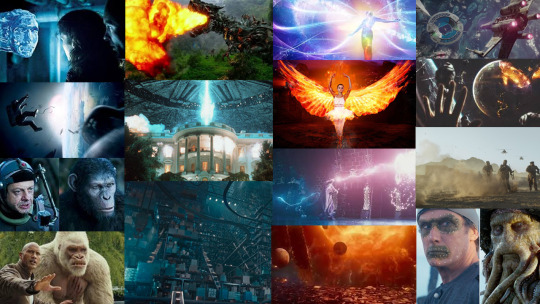
Sources -
History of VFX - https://www.youtube.com/watch?v=tsDdAXKtYAE
21st century VFX - https://www.youtube.com/watch?v=G0cPeEAhzWU
VFX Pipeline - https://myfirstjobinfilm.co.uk/resources/careers-guide/detail?page_id=1
Jobs in VFX - https://www.screenskills.com/careers/job-profiles/animation-games-and-vfx/vfx/
VFX techniques and process - https://www.premiumbeat.com/blog/how-an-average-vfx-pipeline-works/
Light and Magic research - https://entertainment.howstuffworks.com/perfect-storm1.htm
0 notes